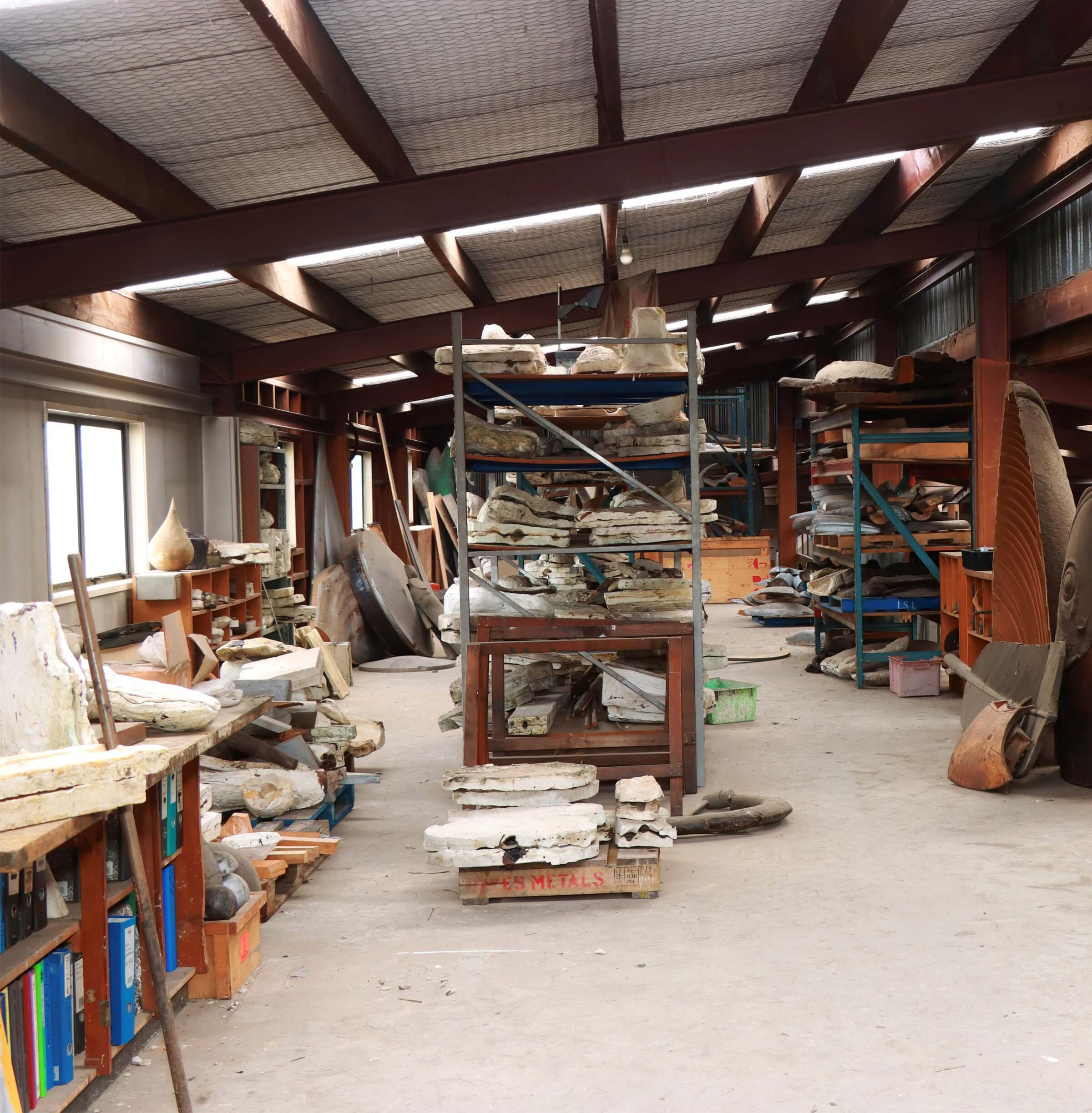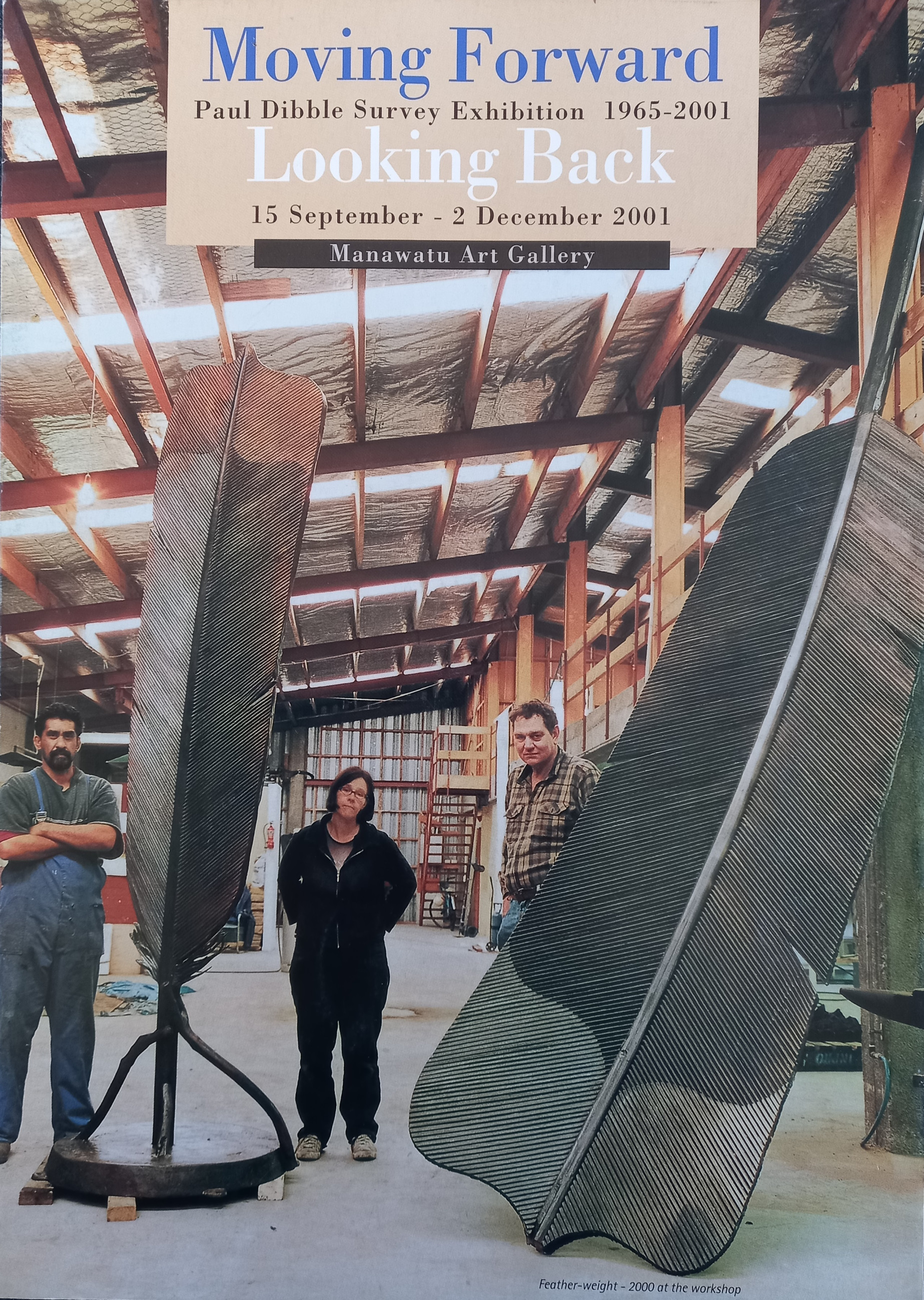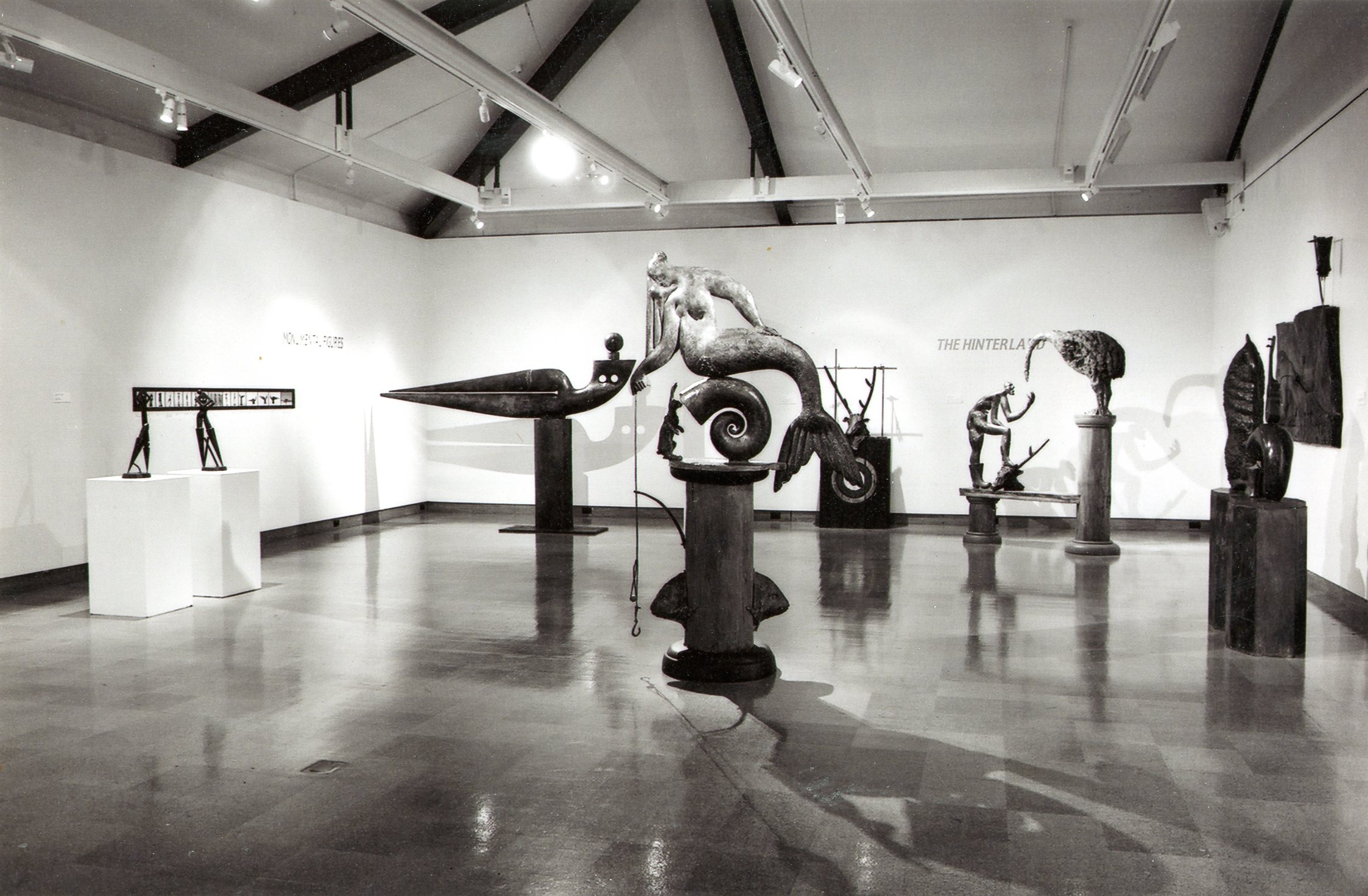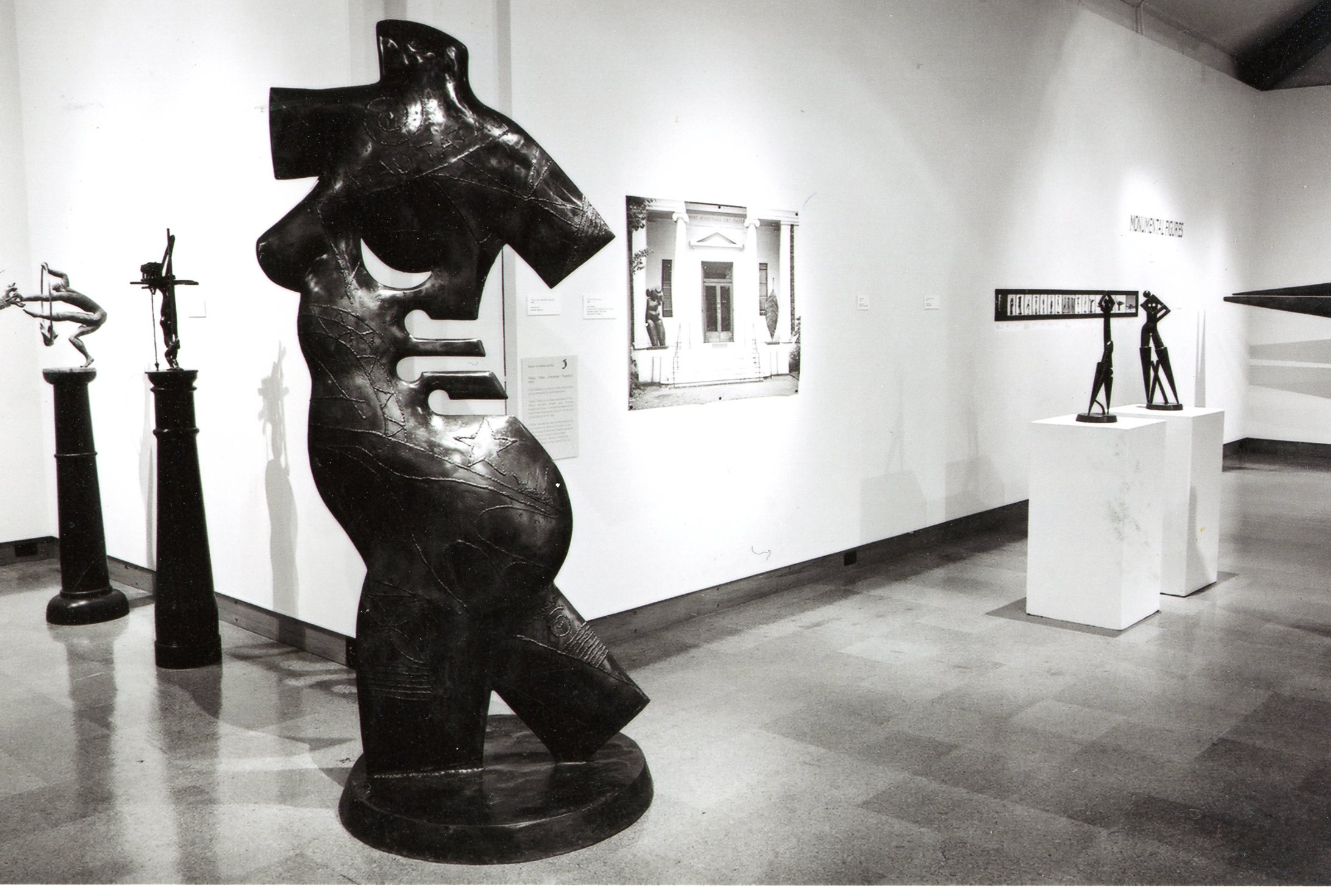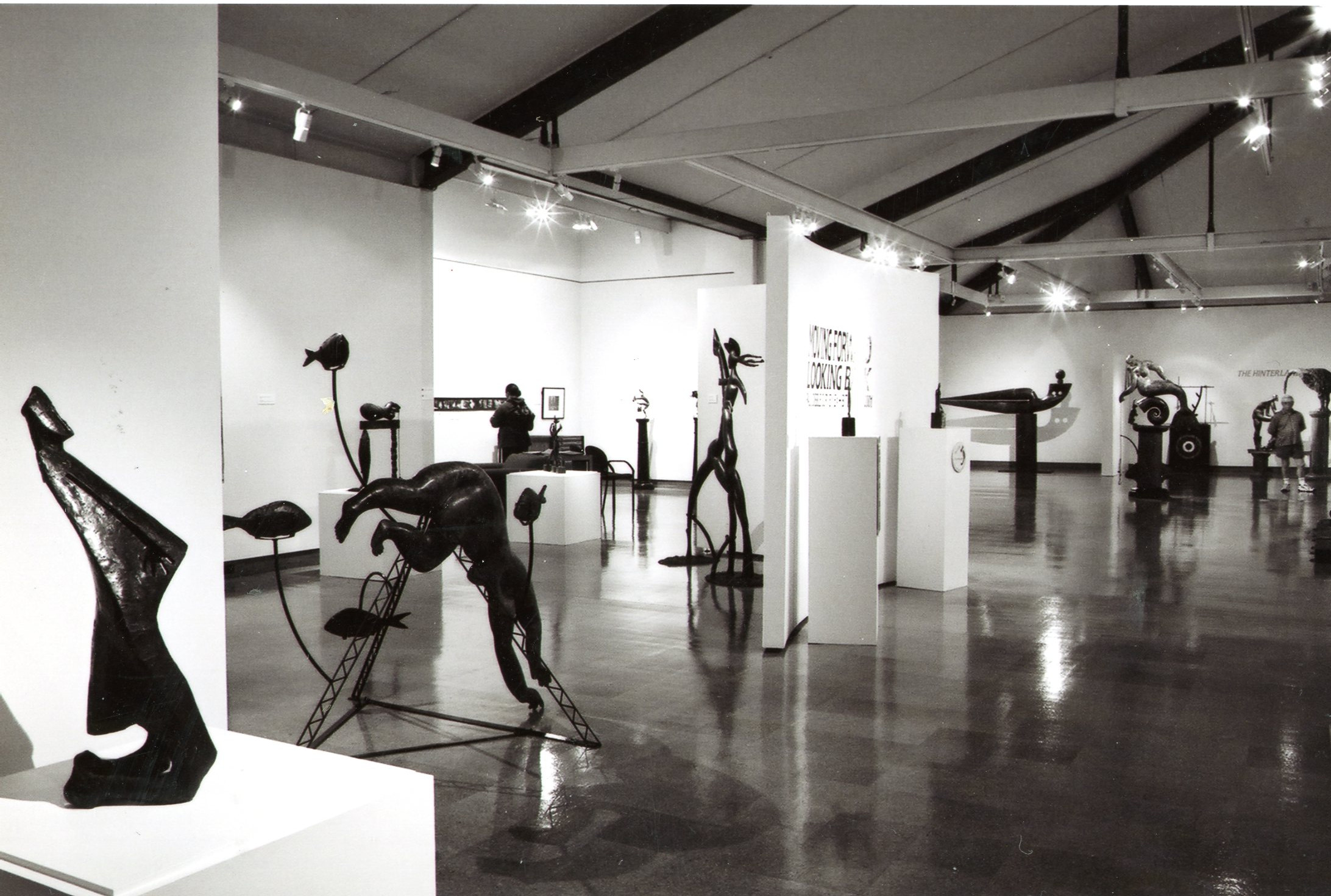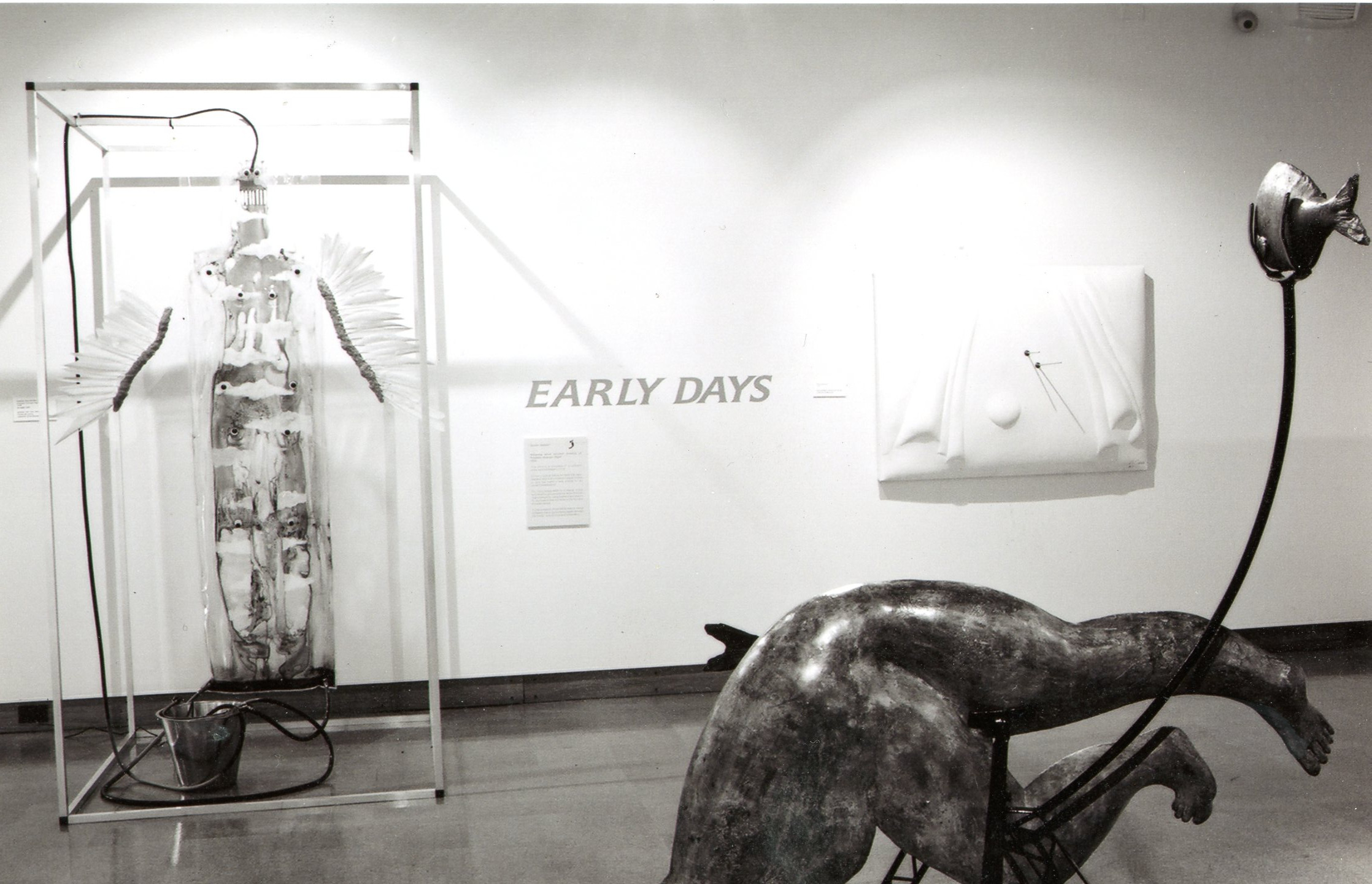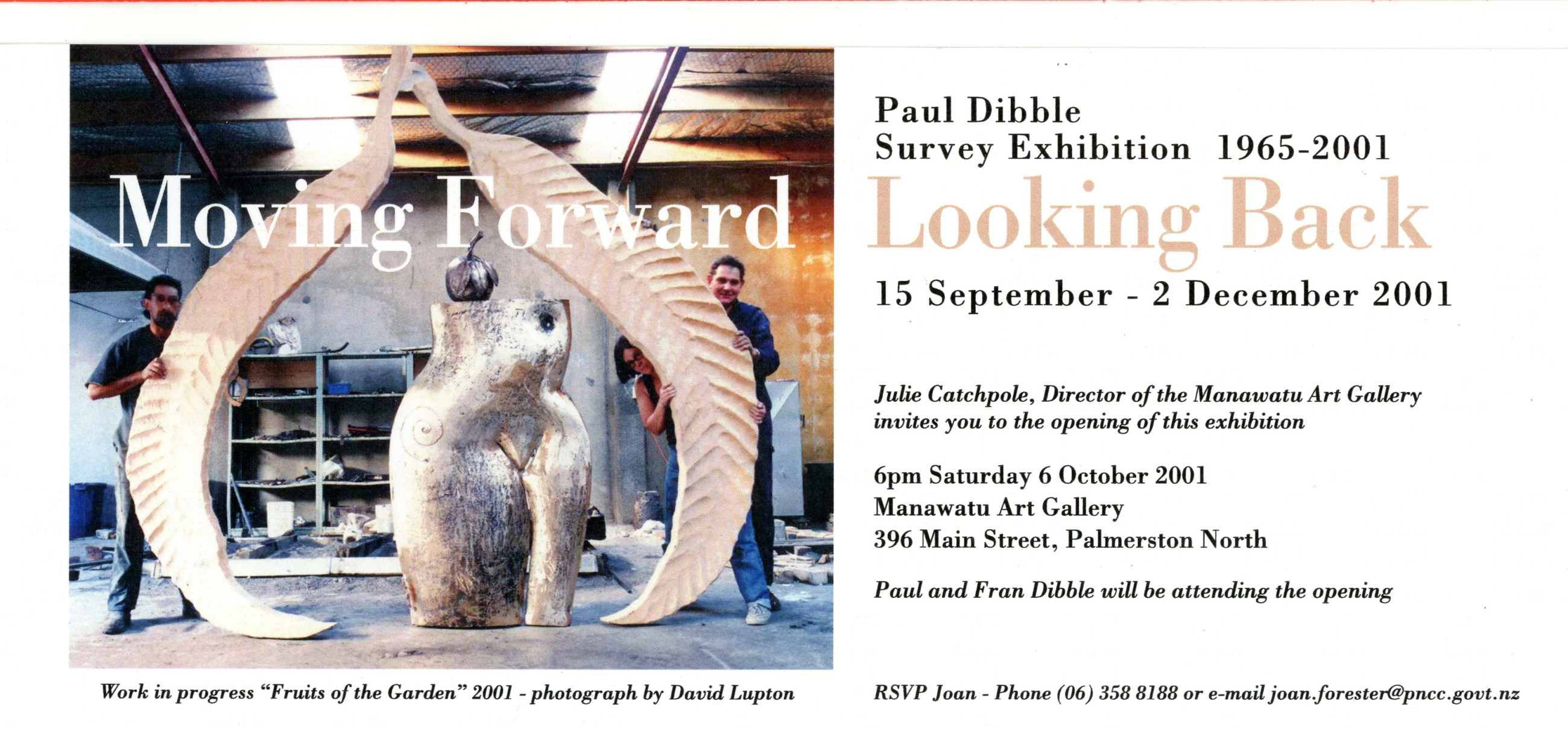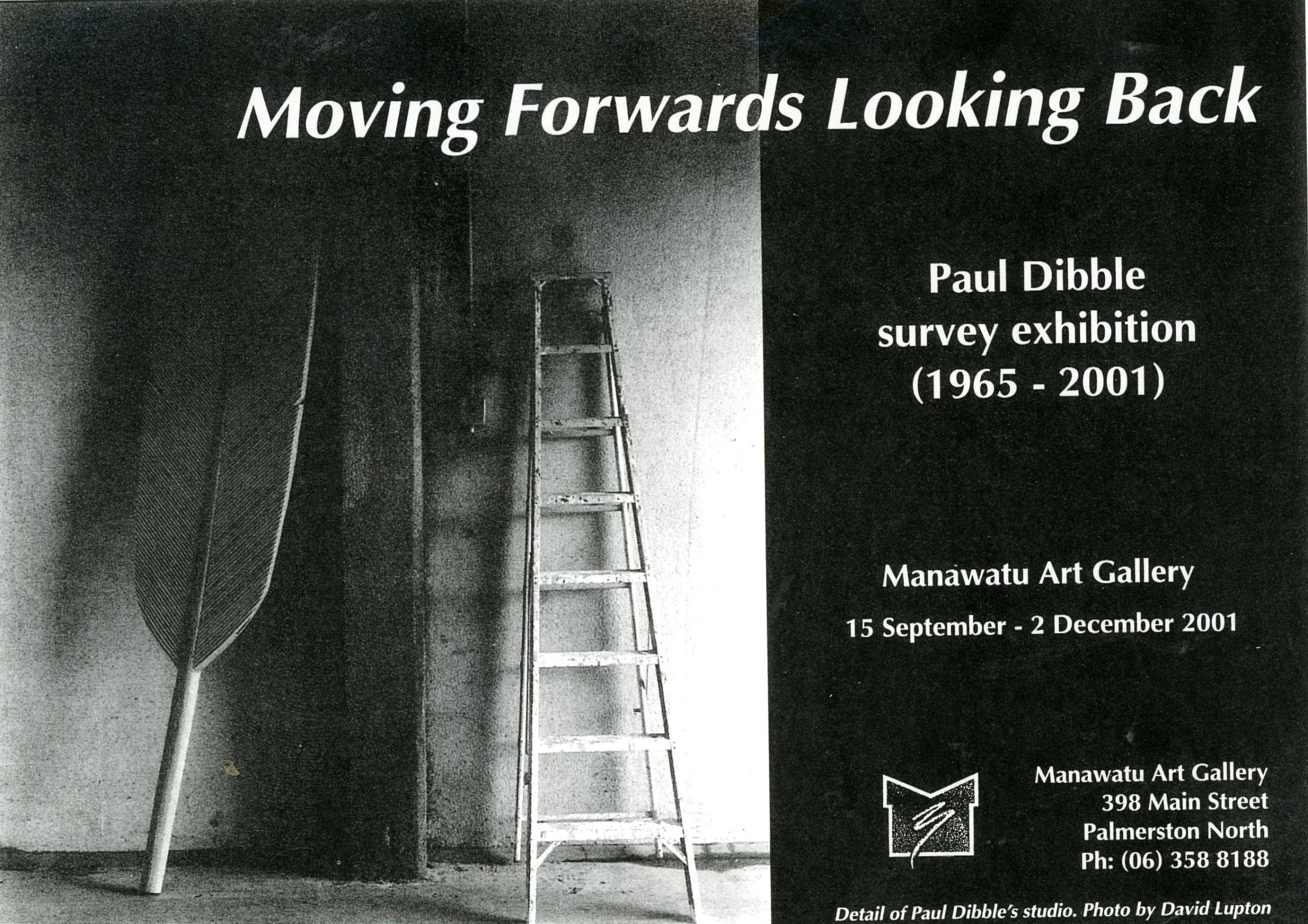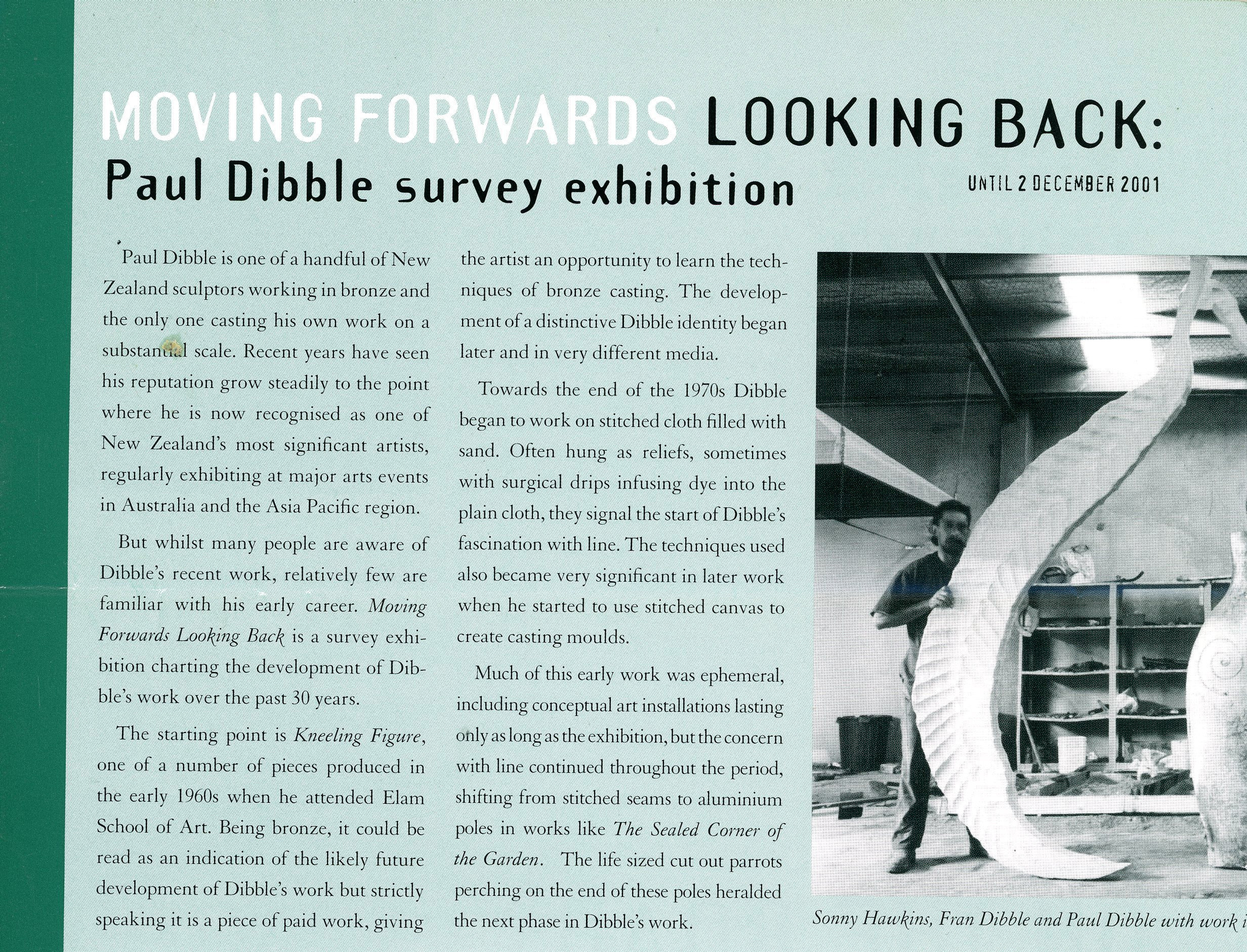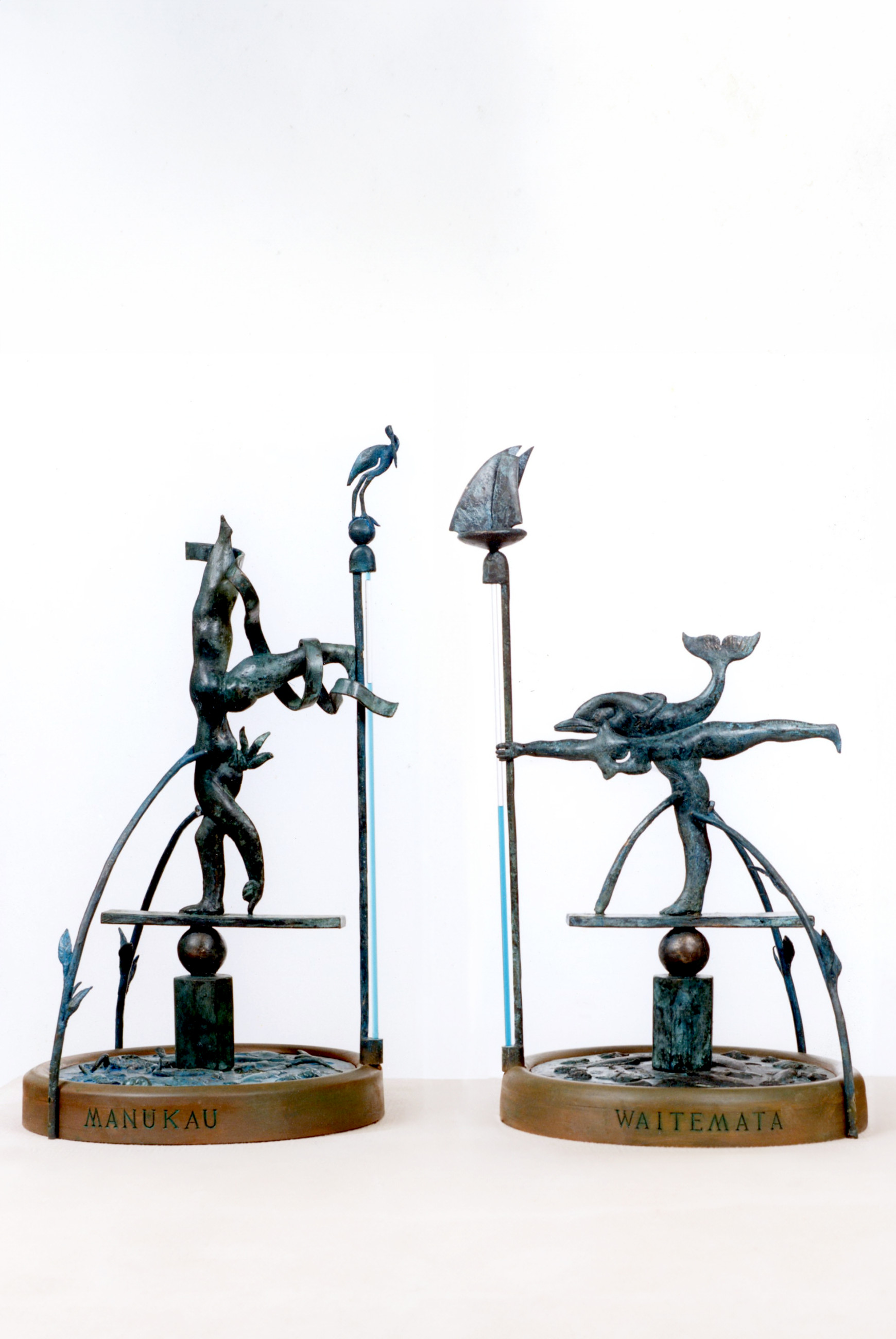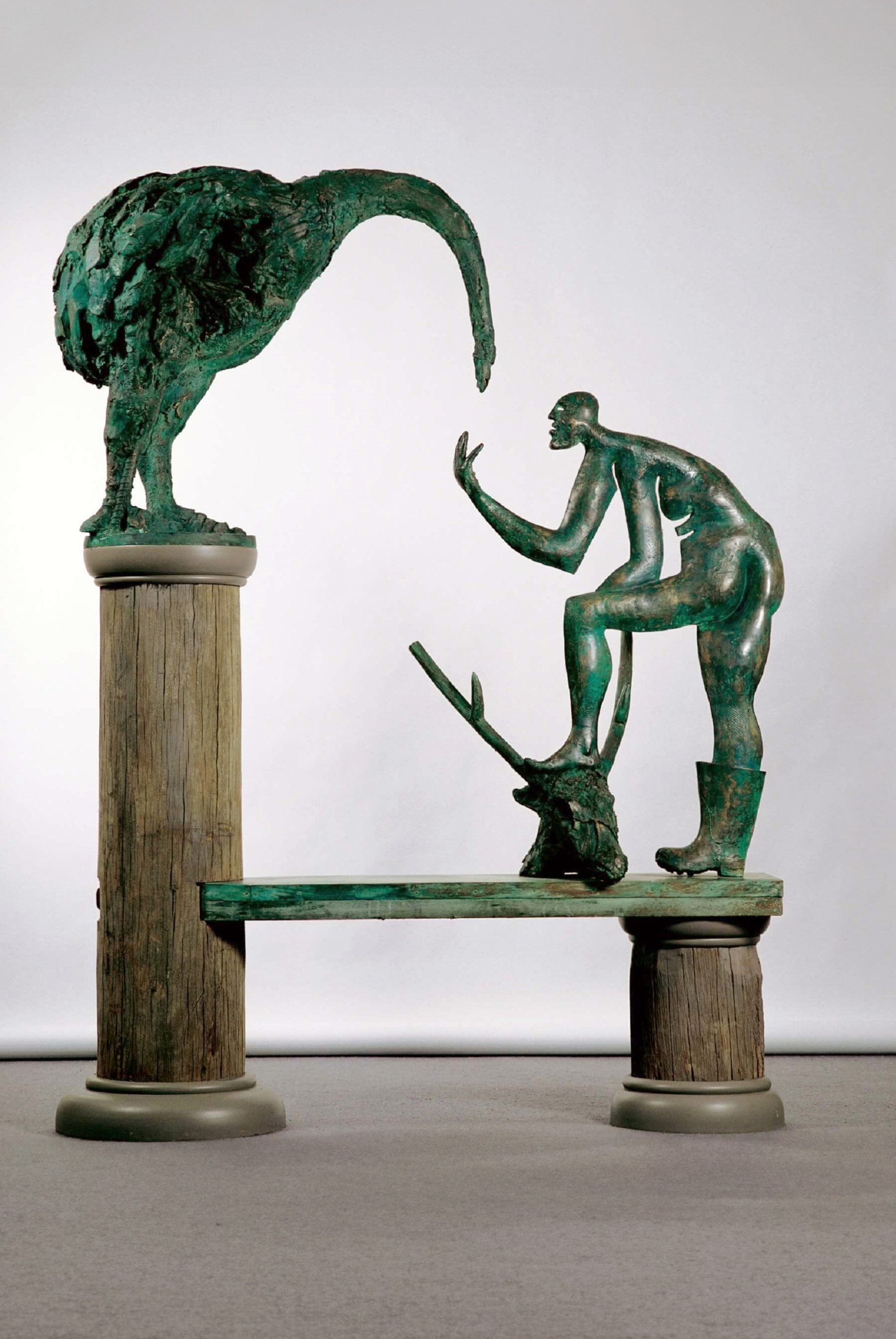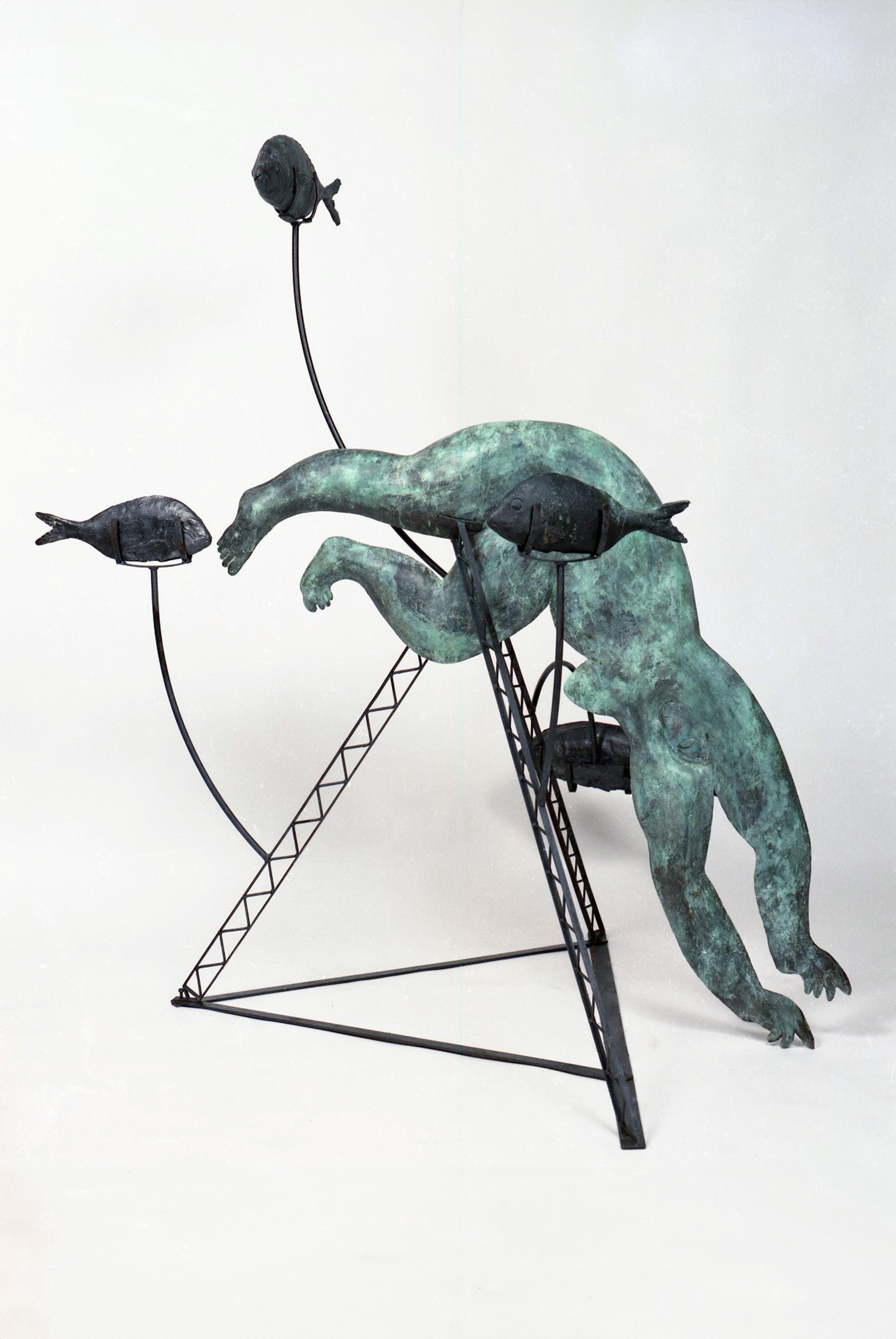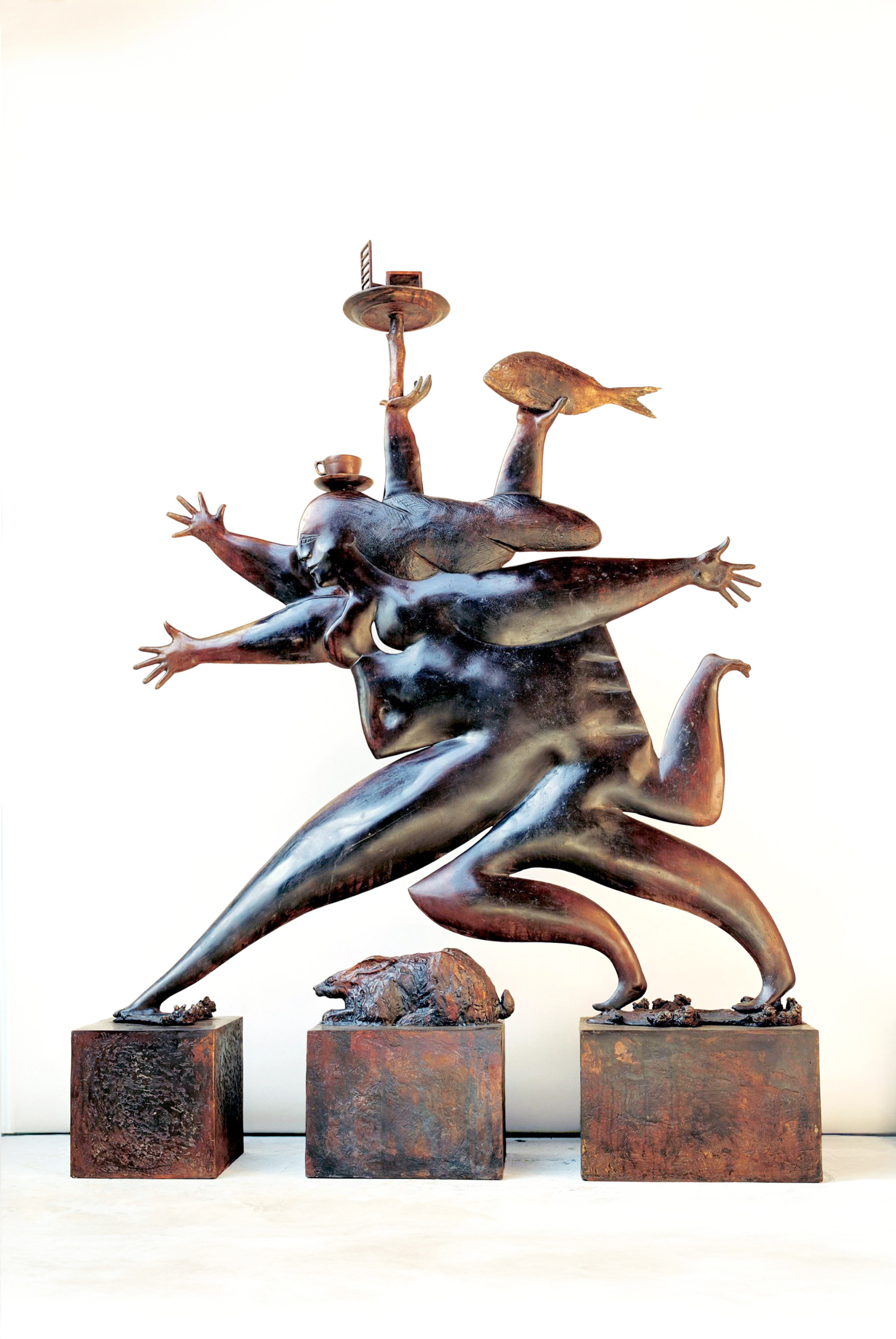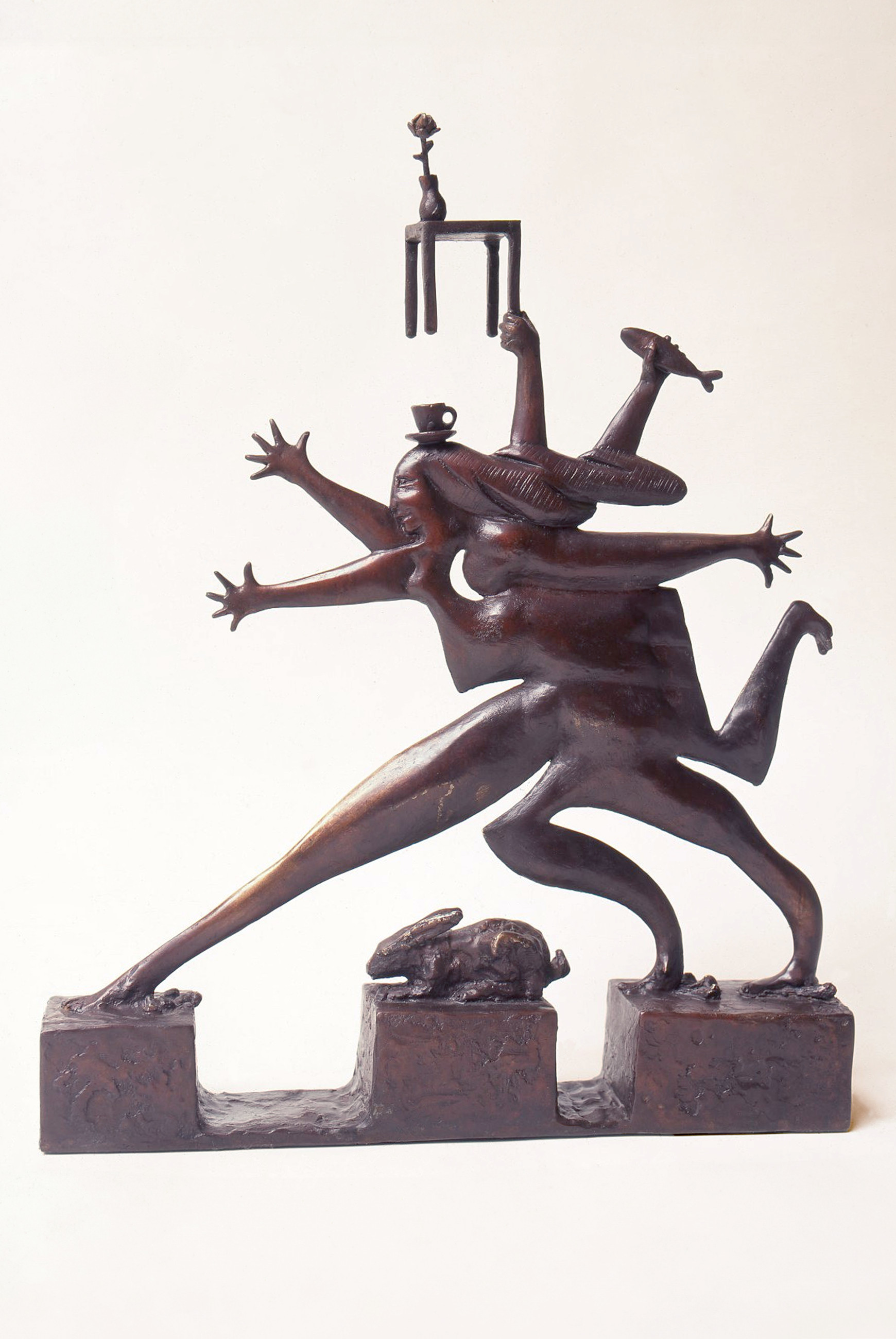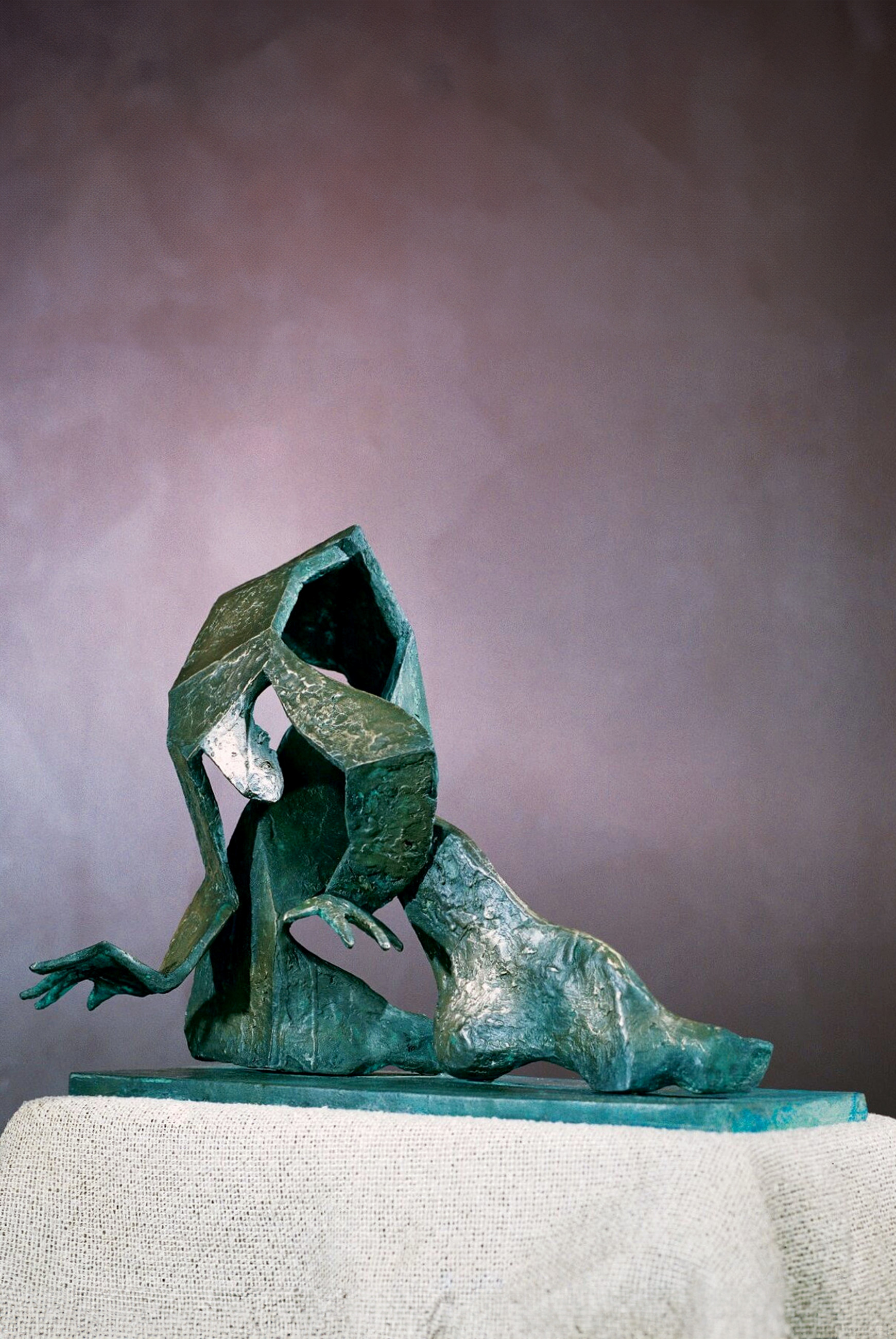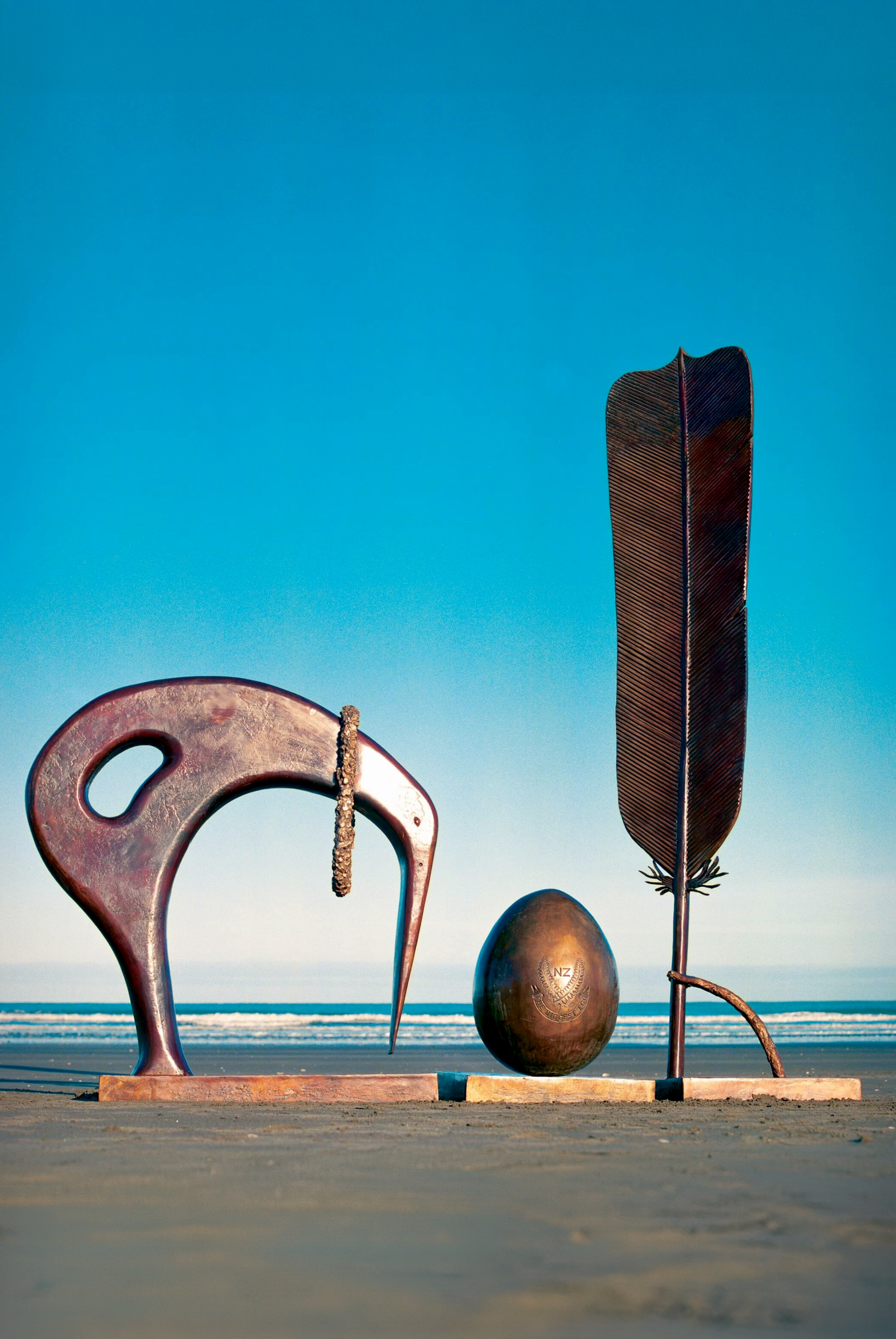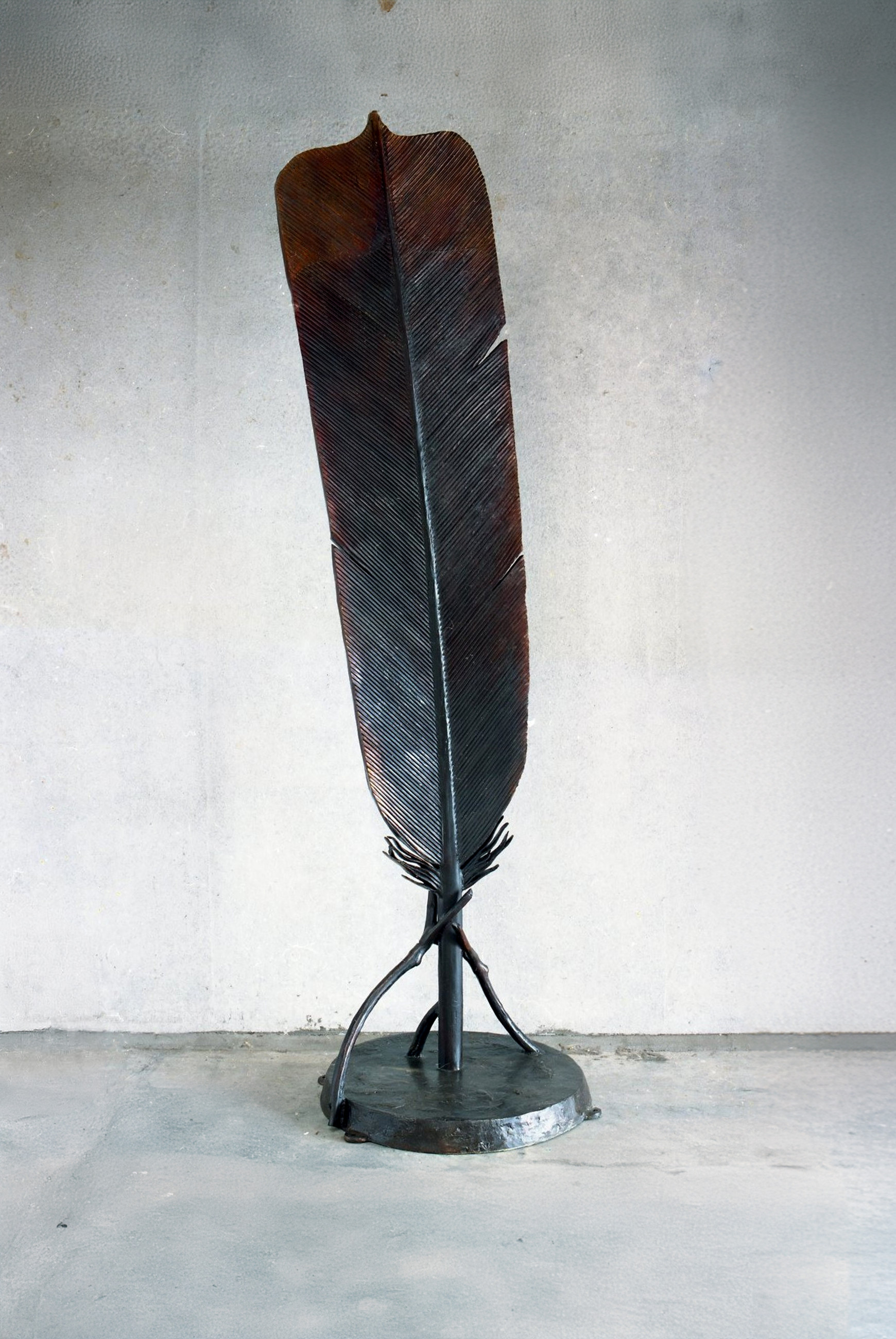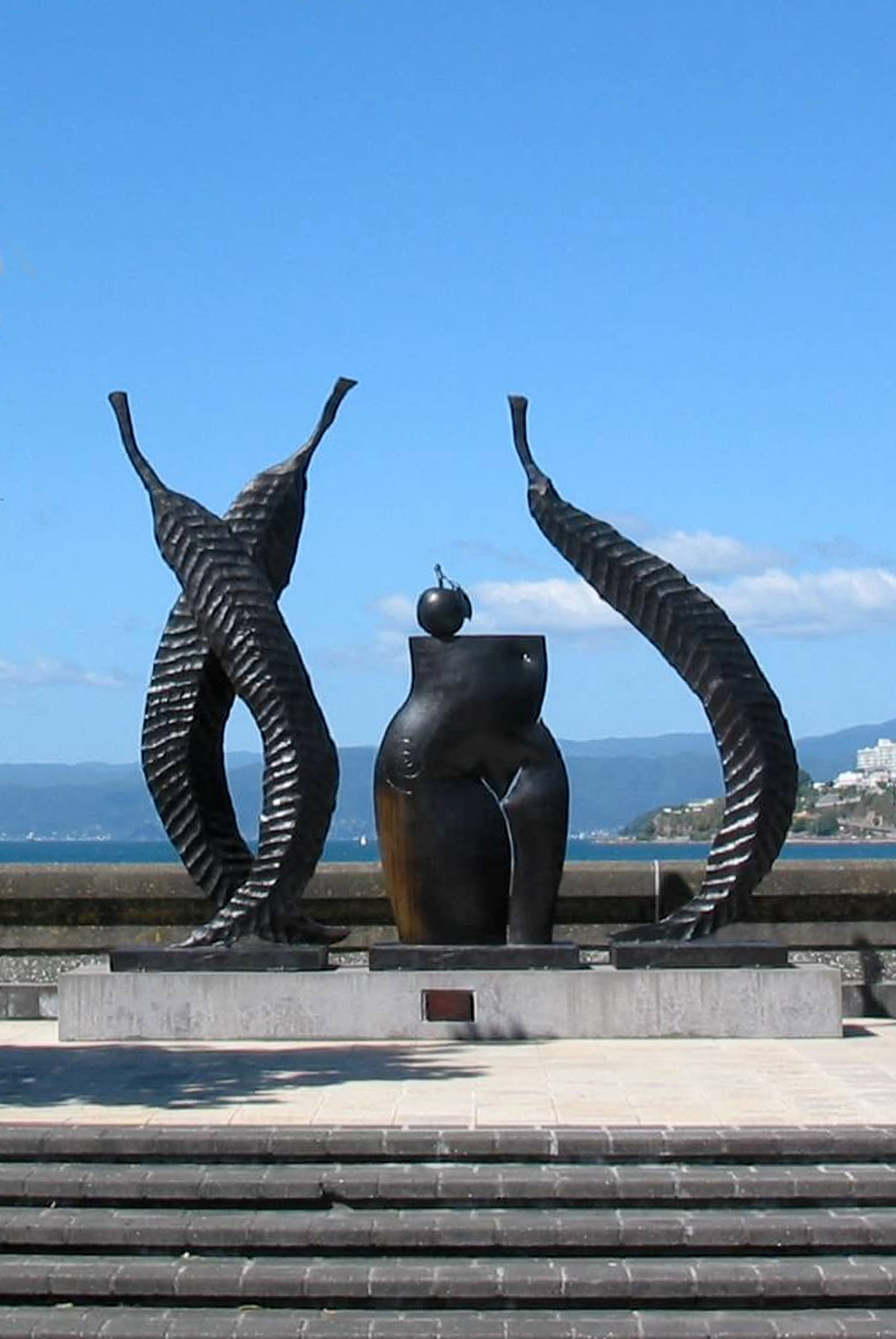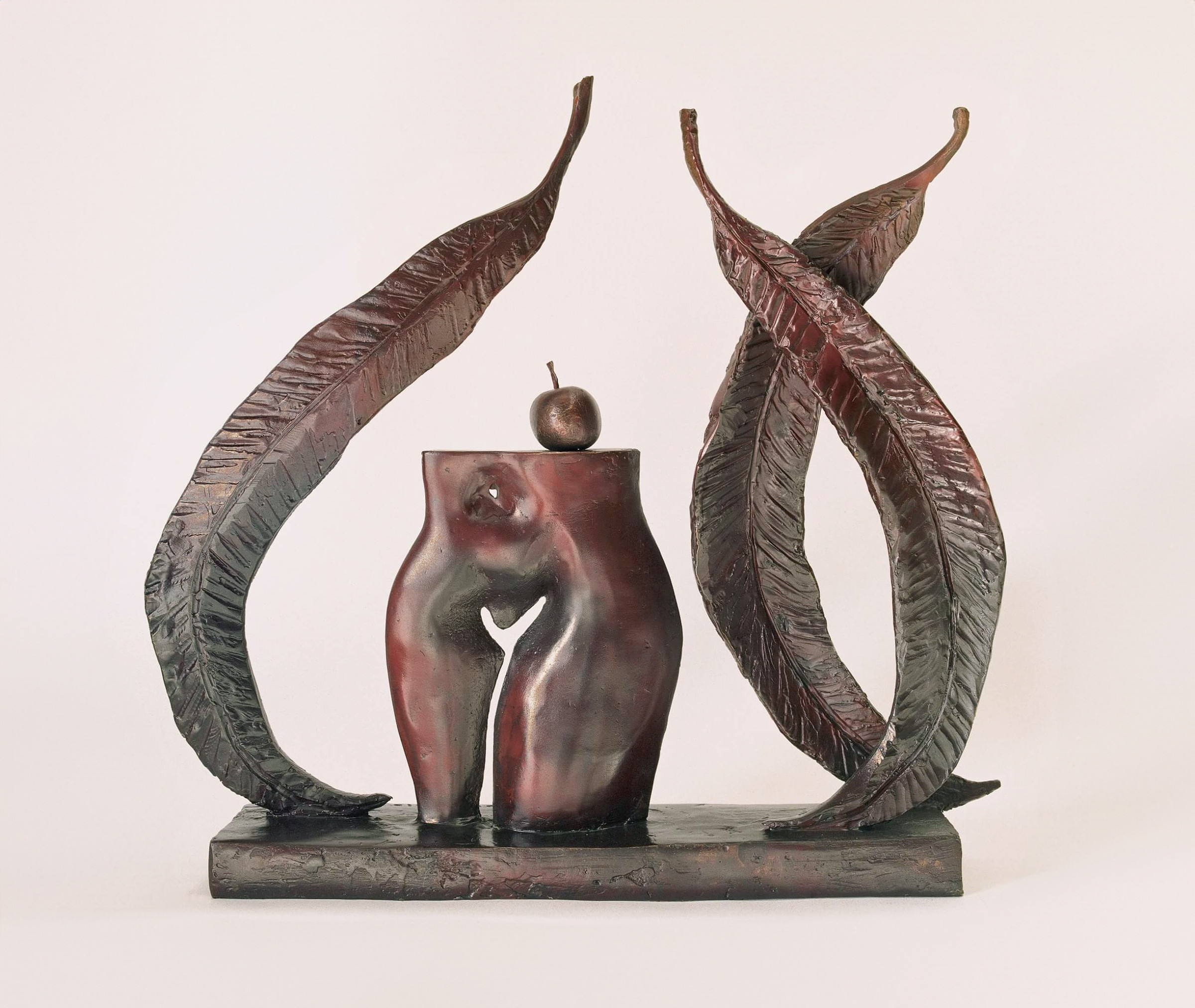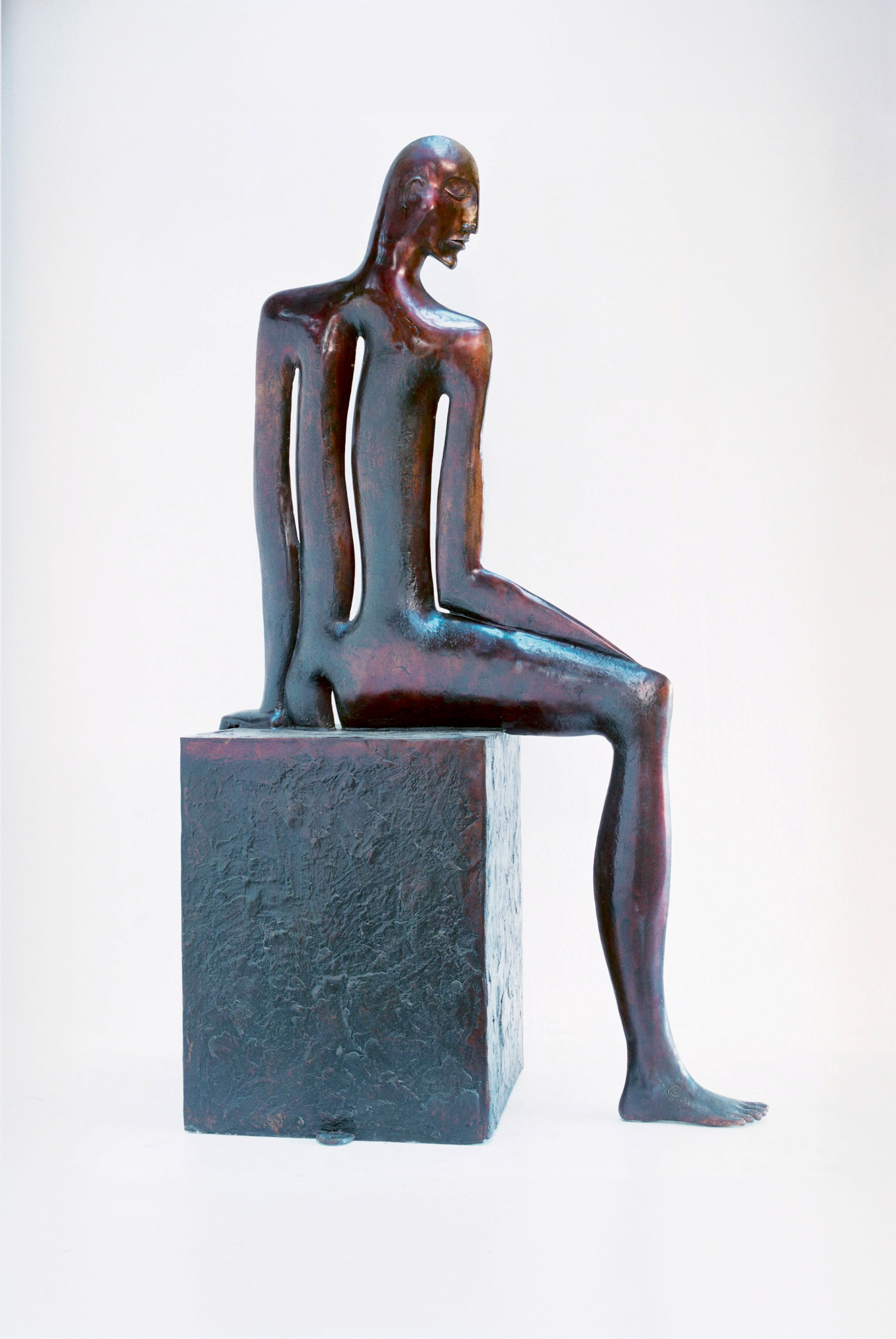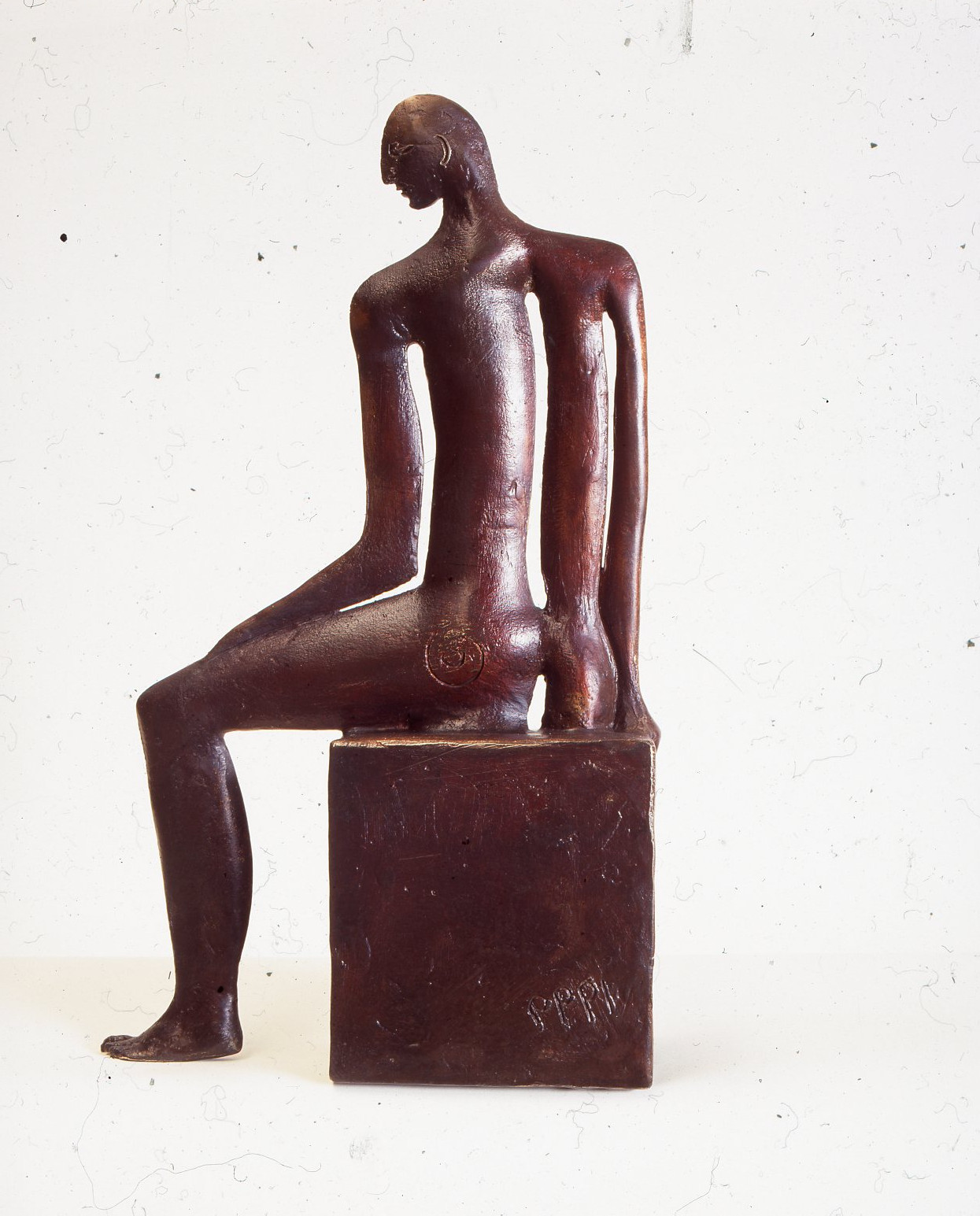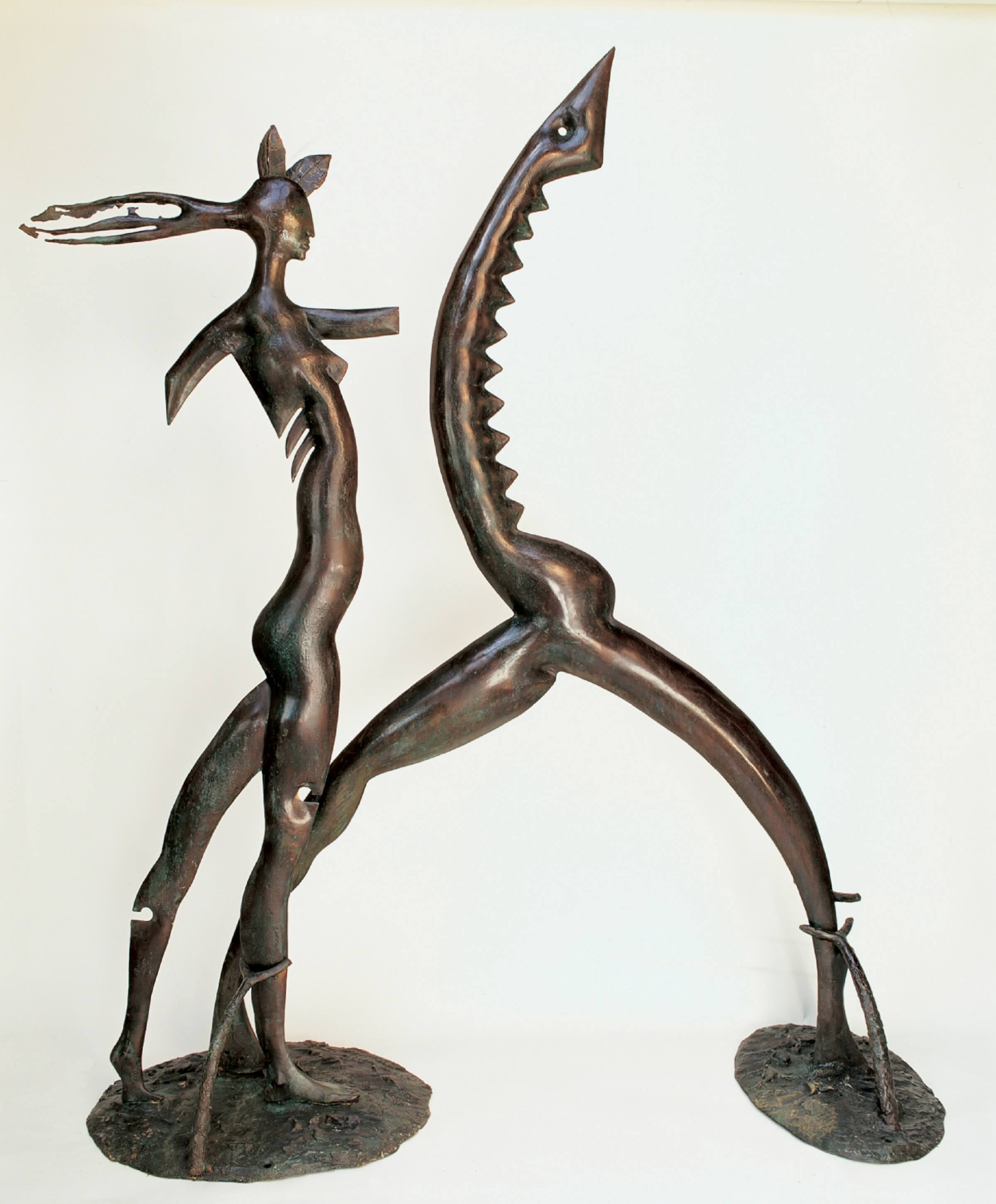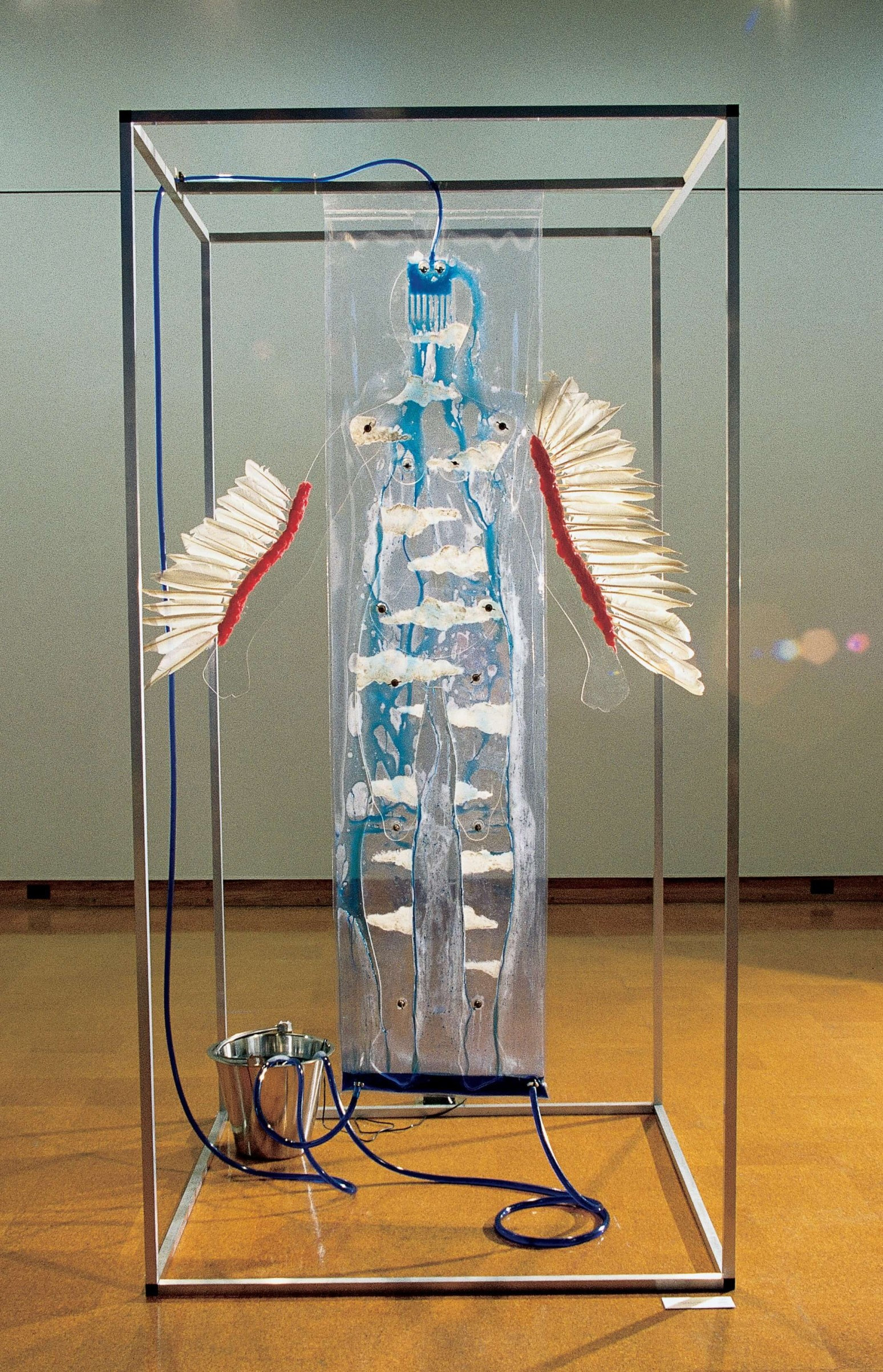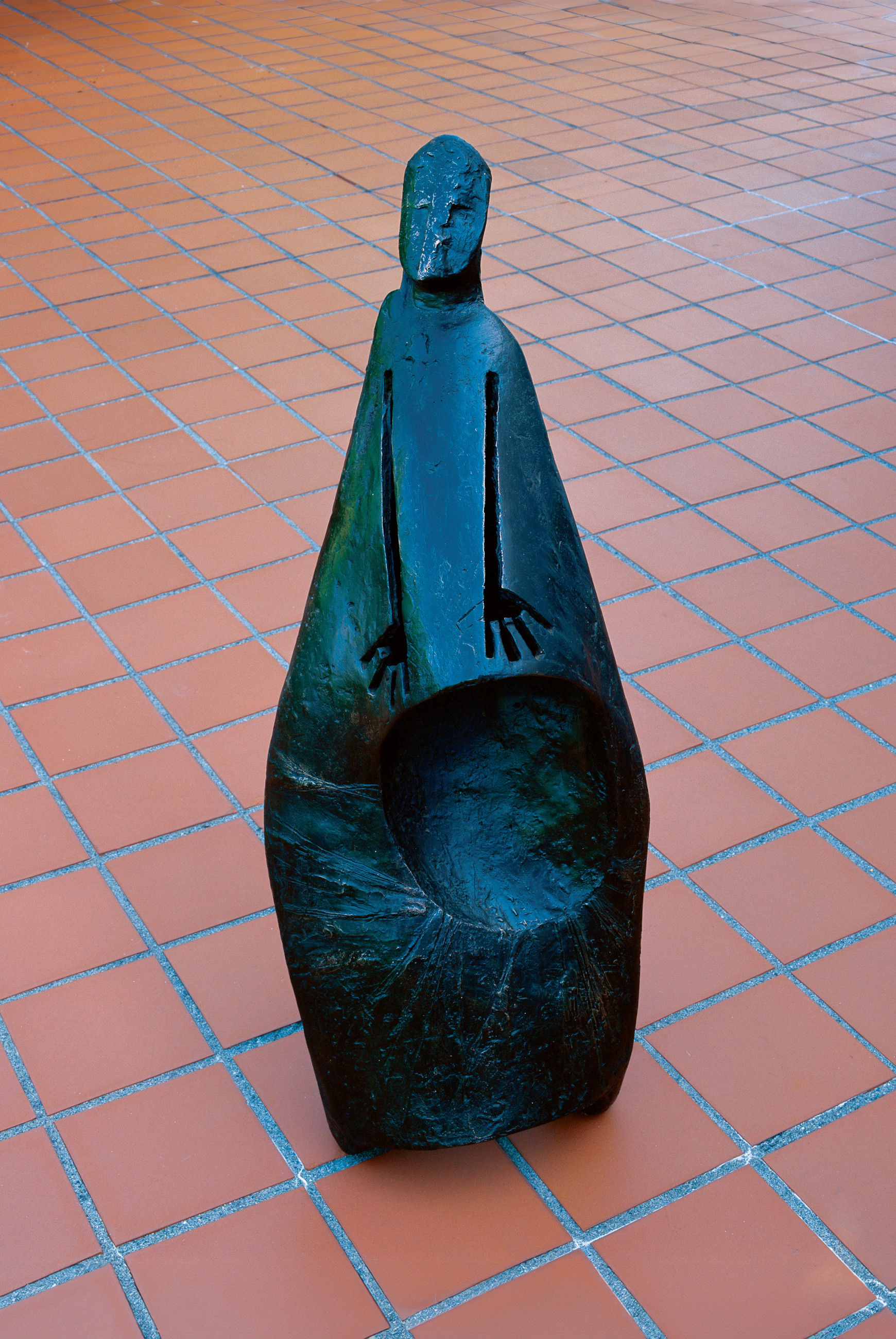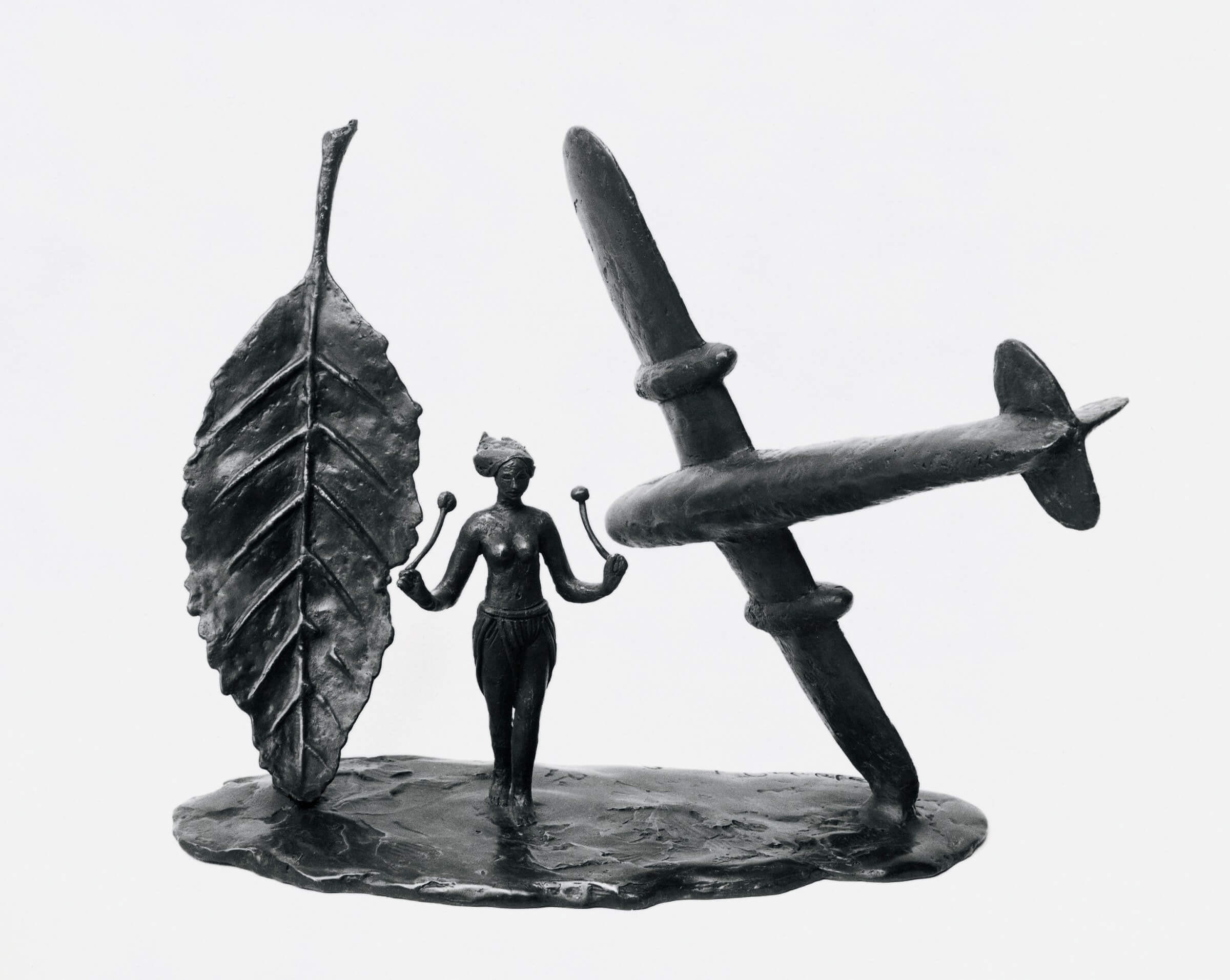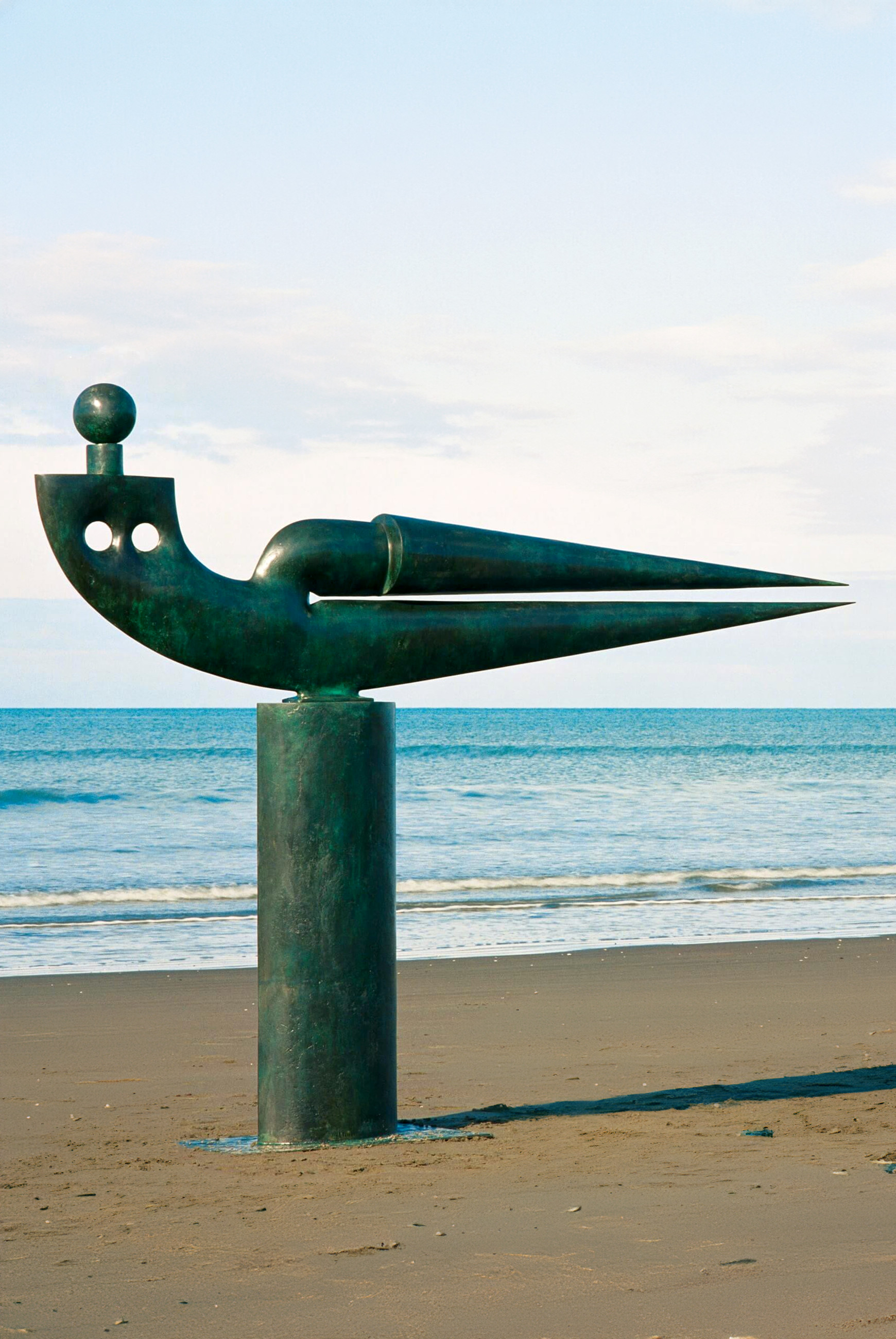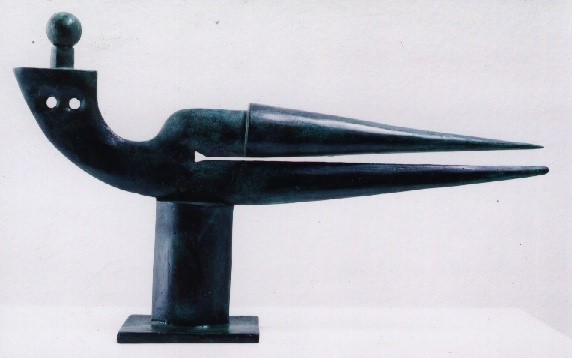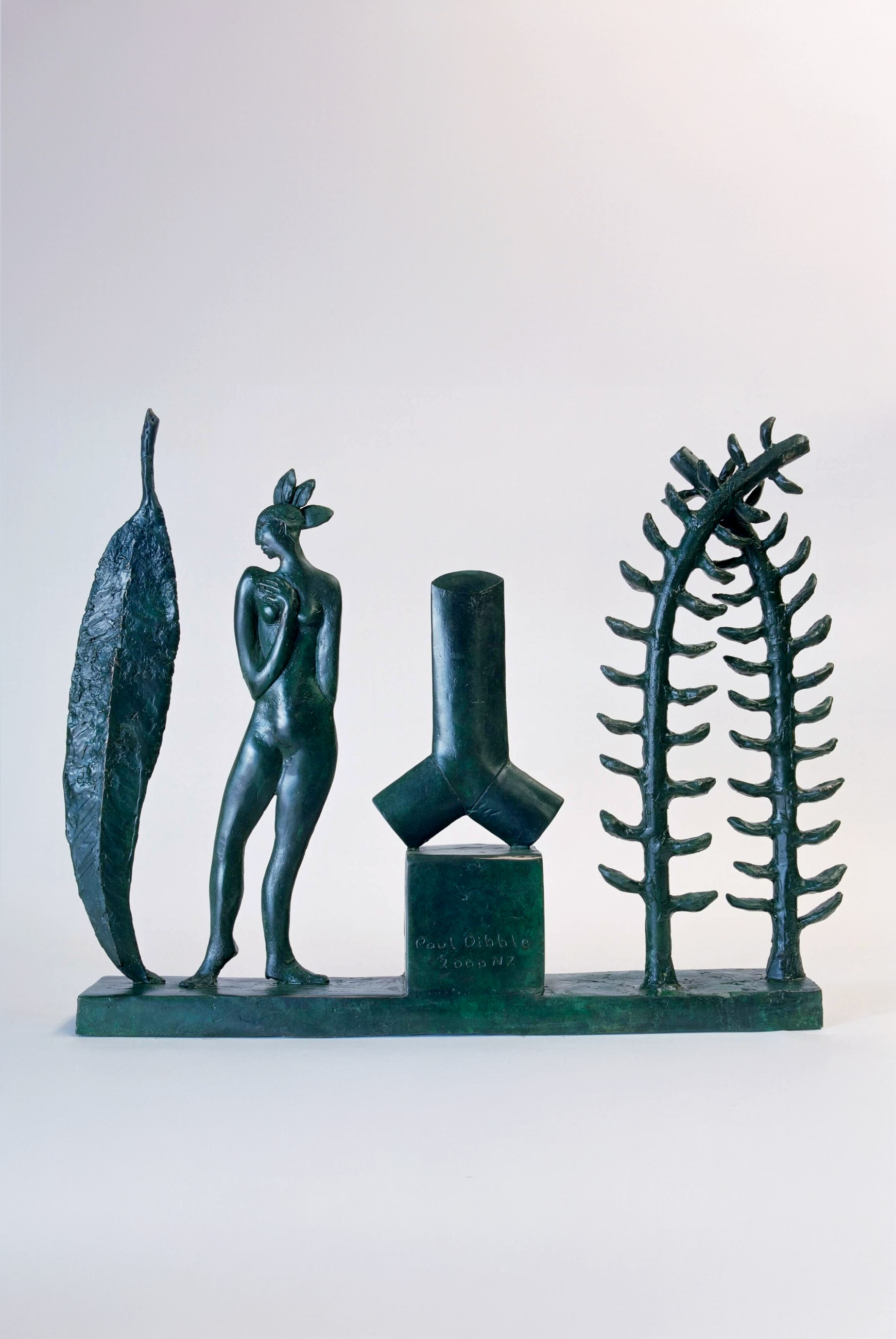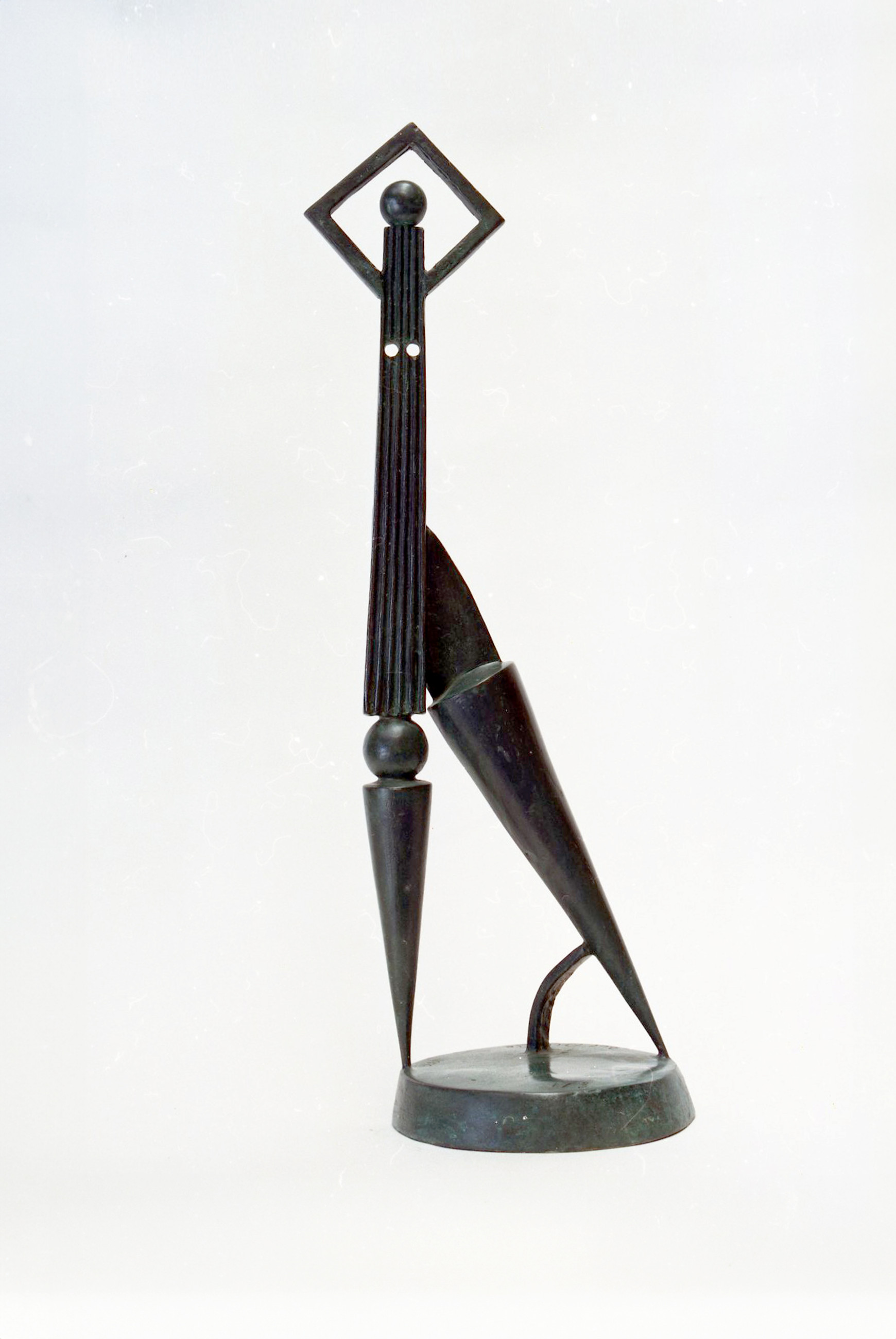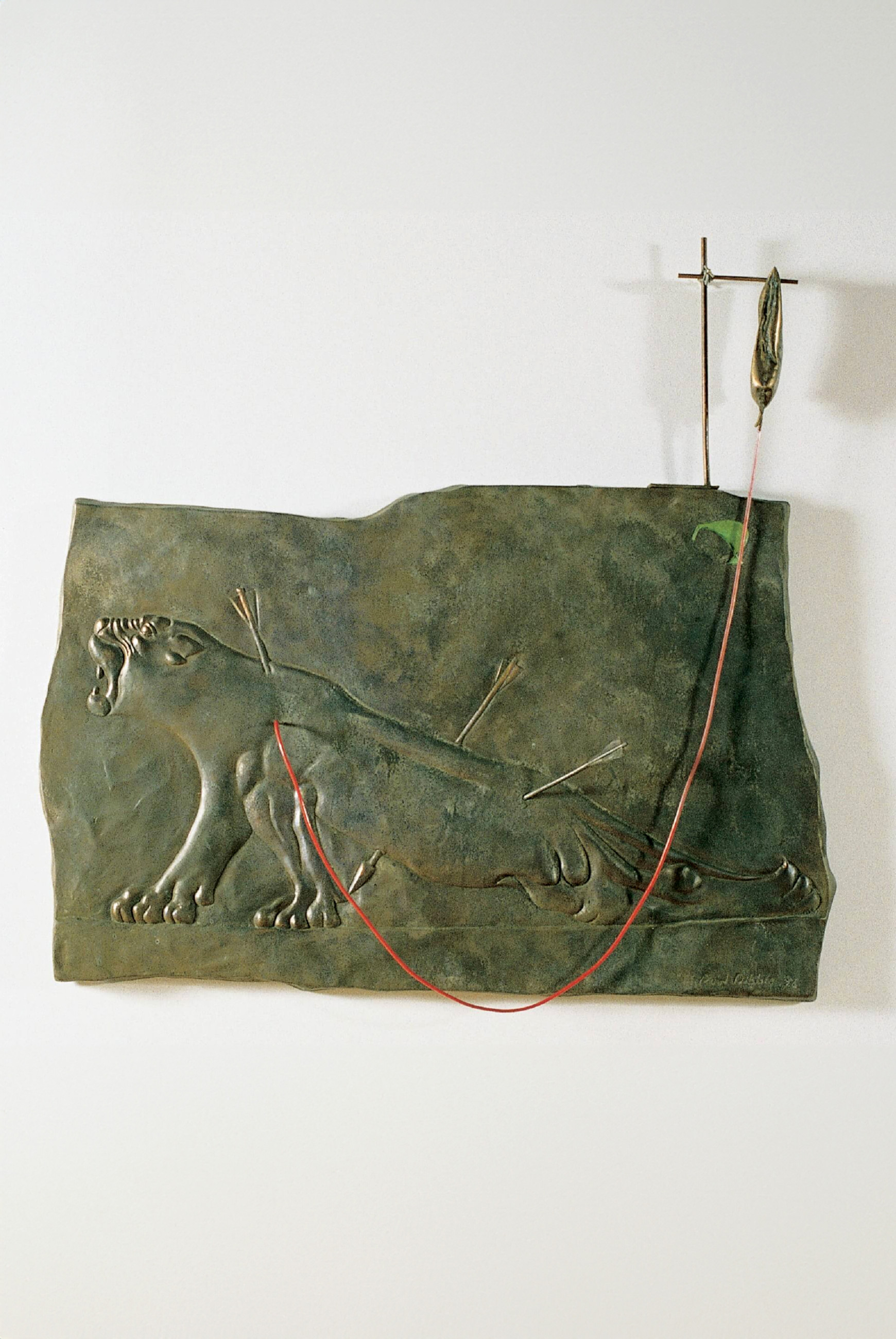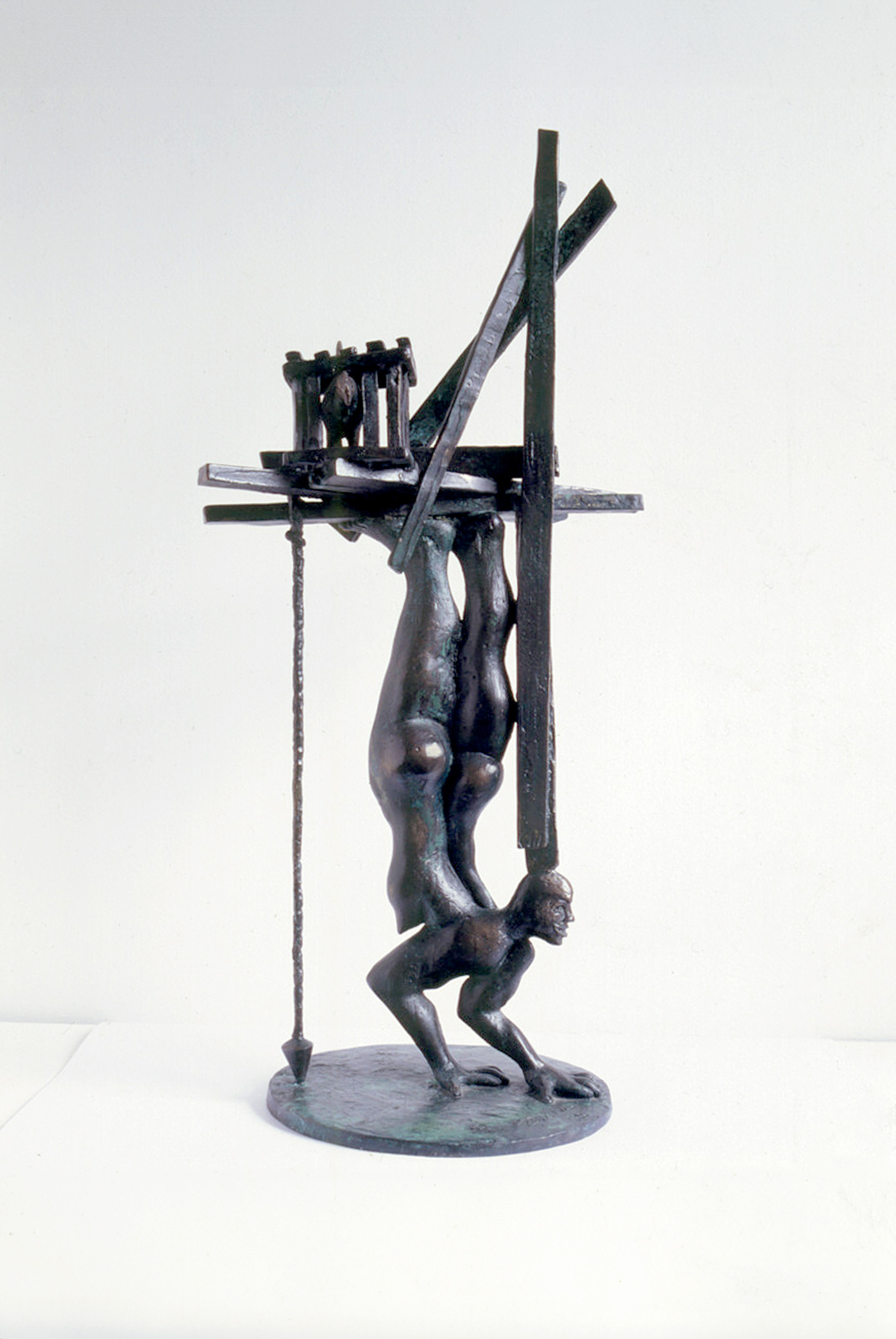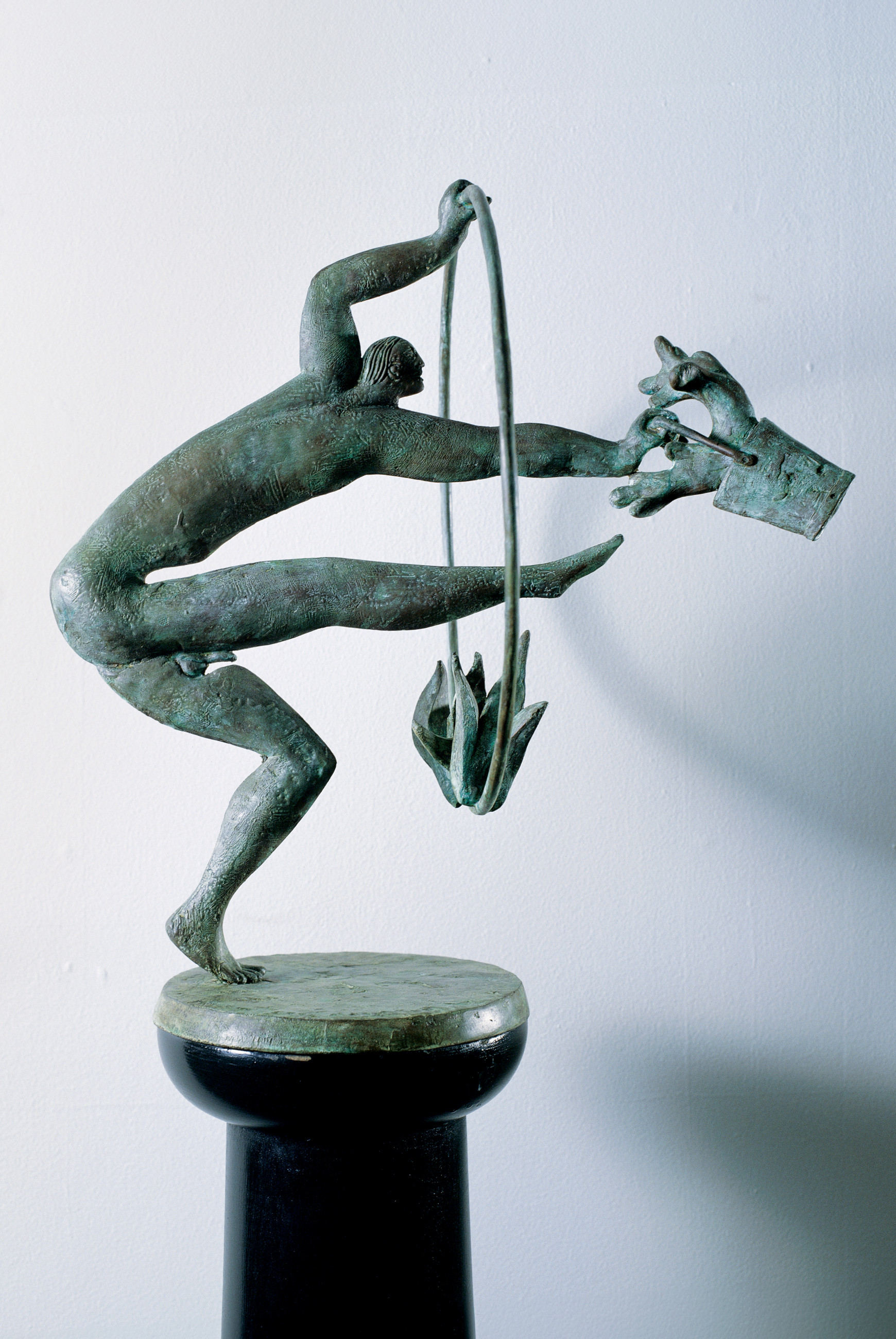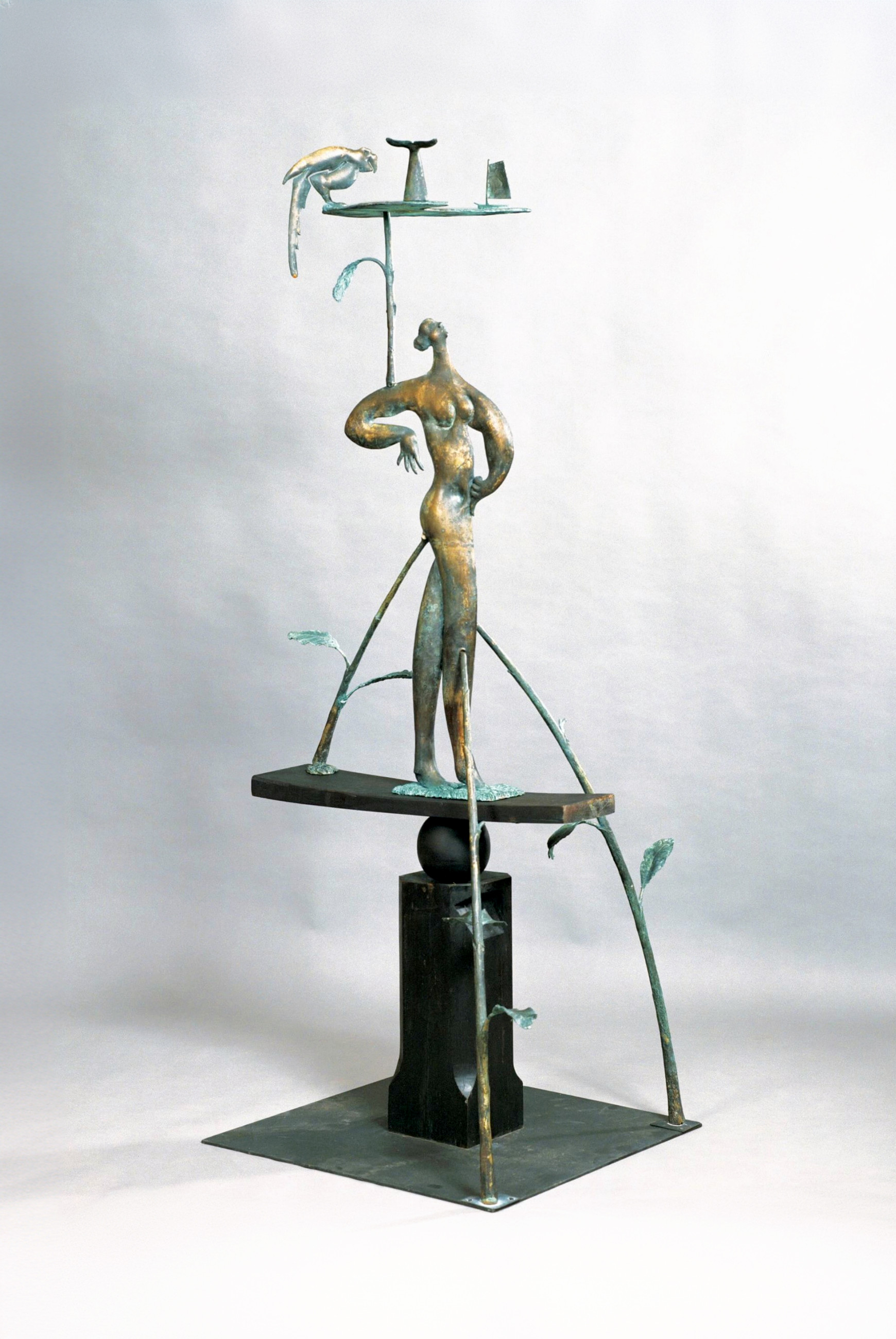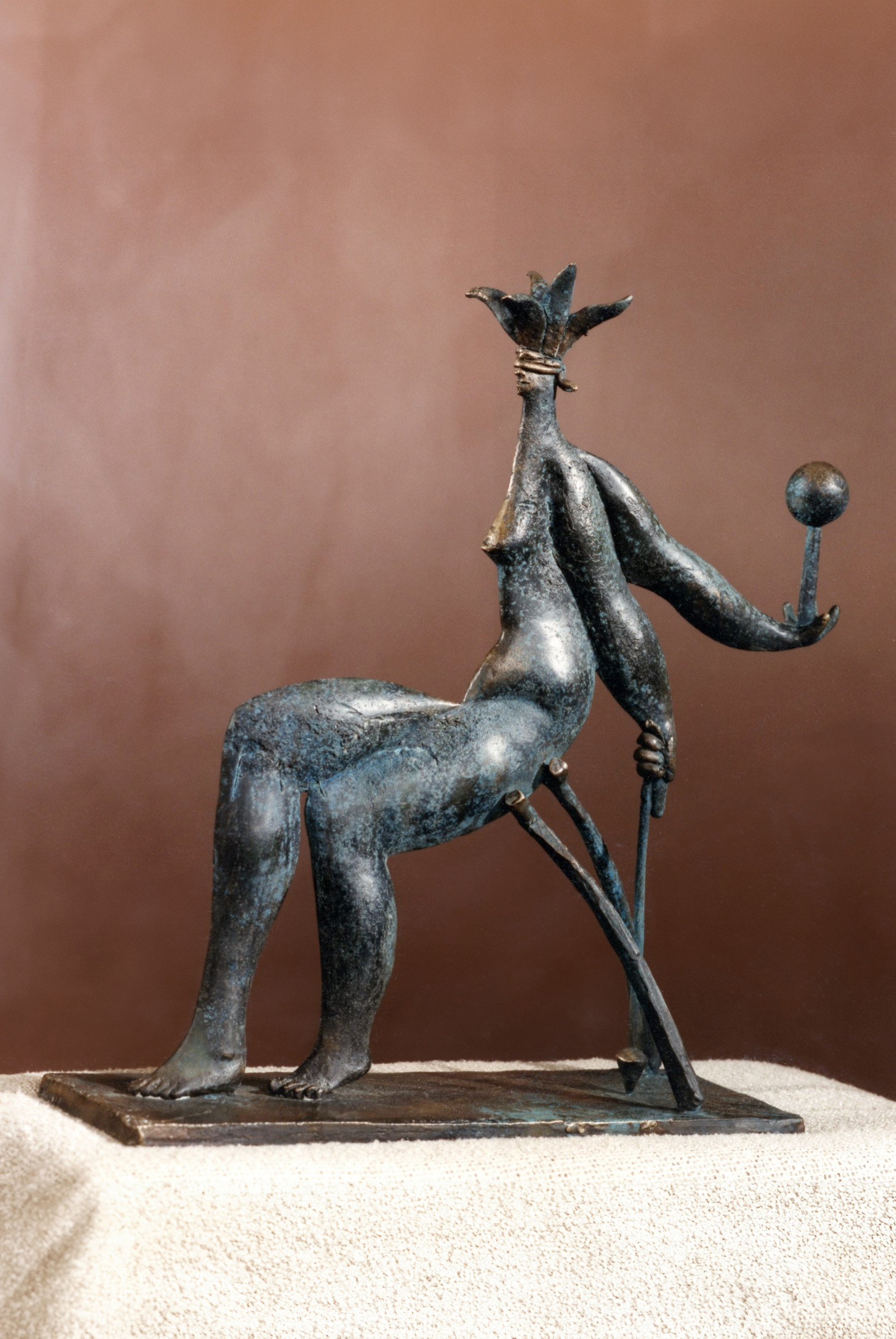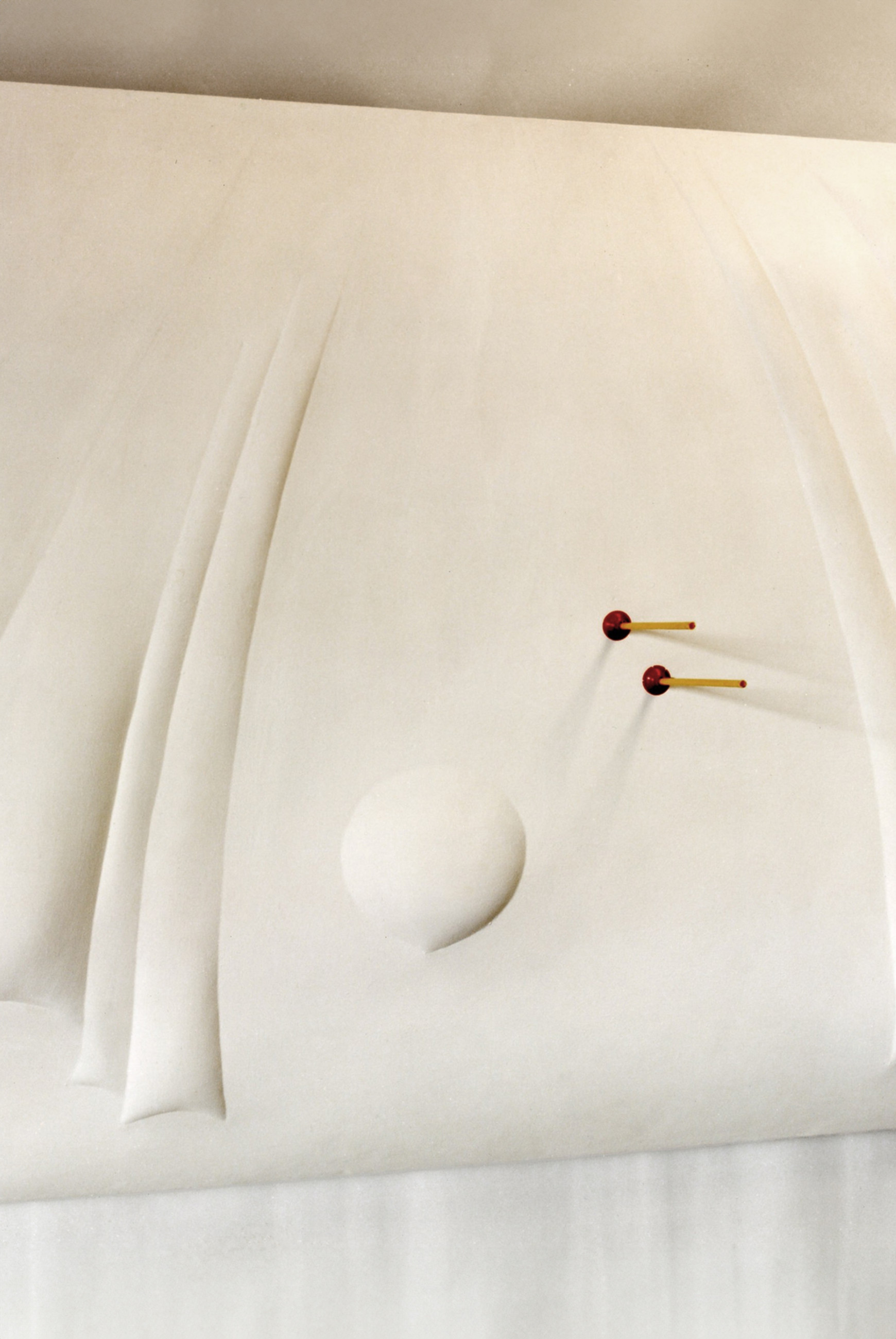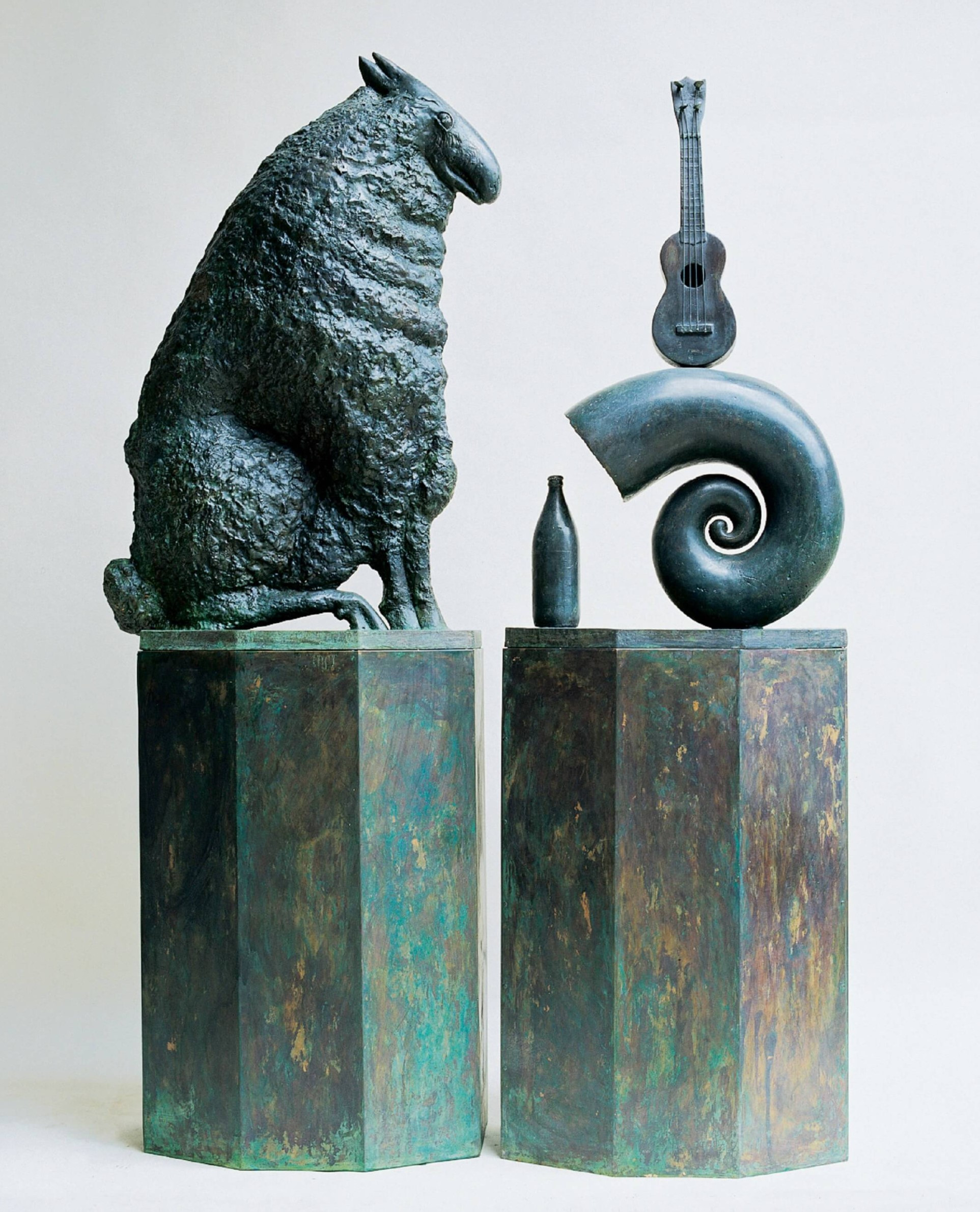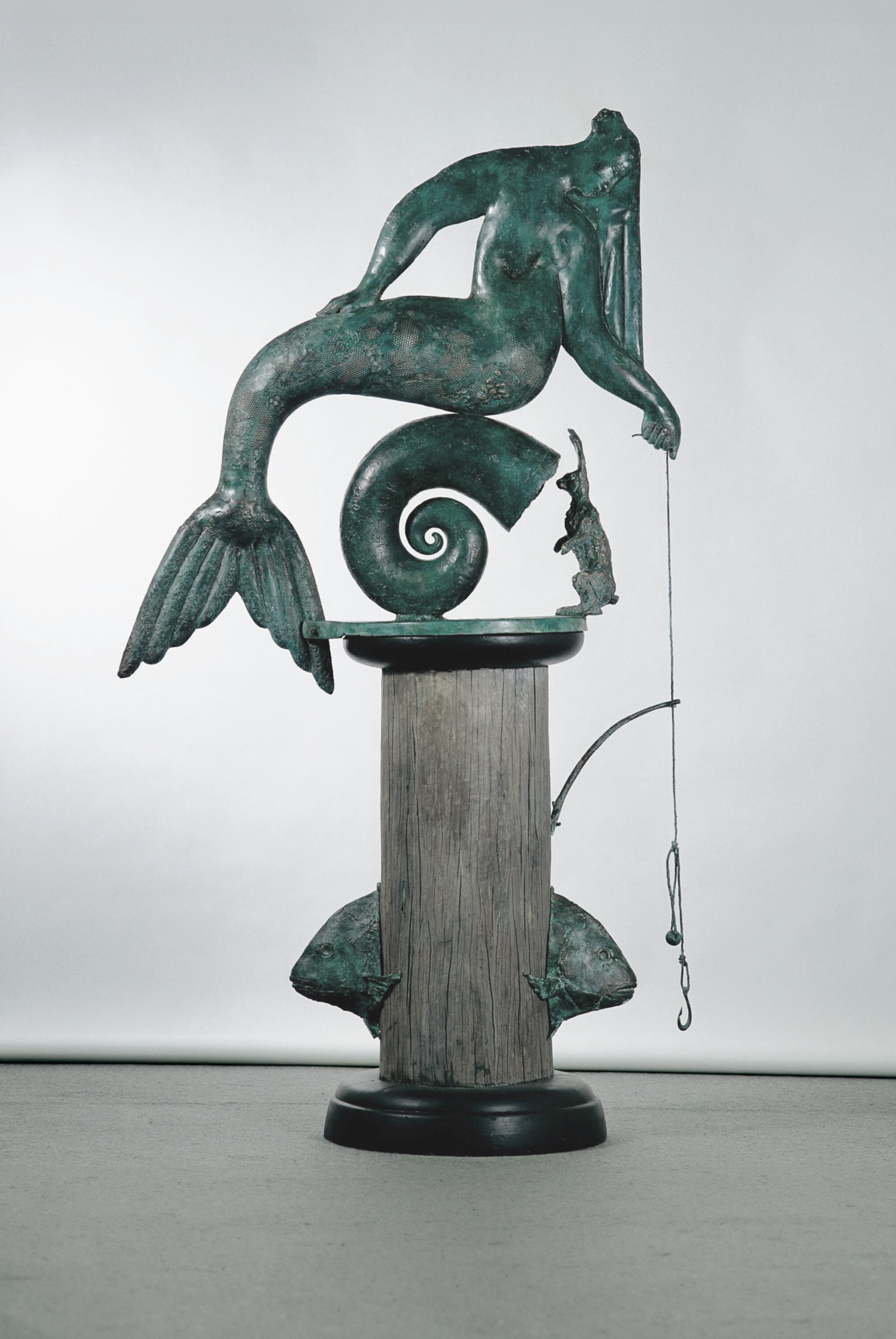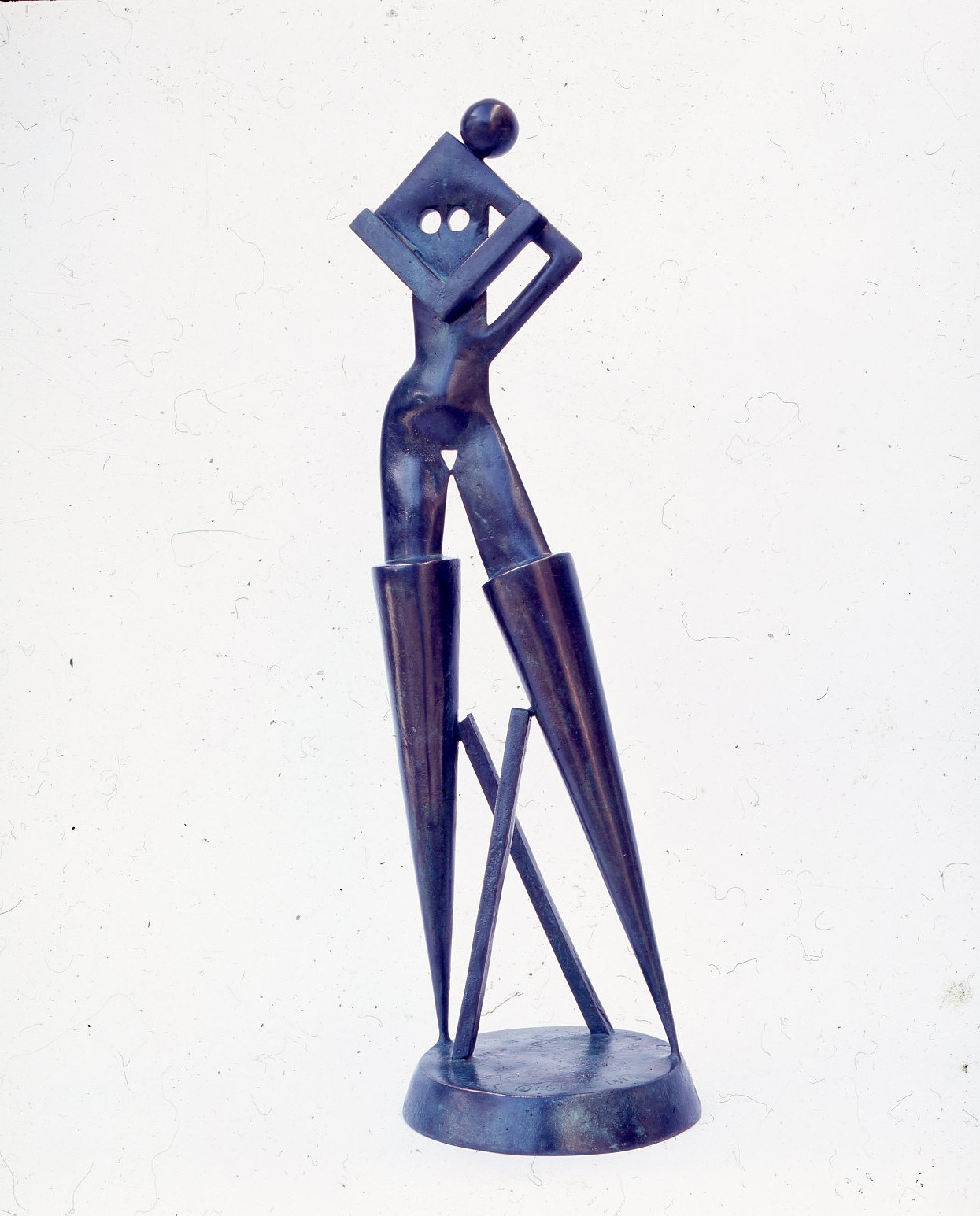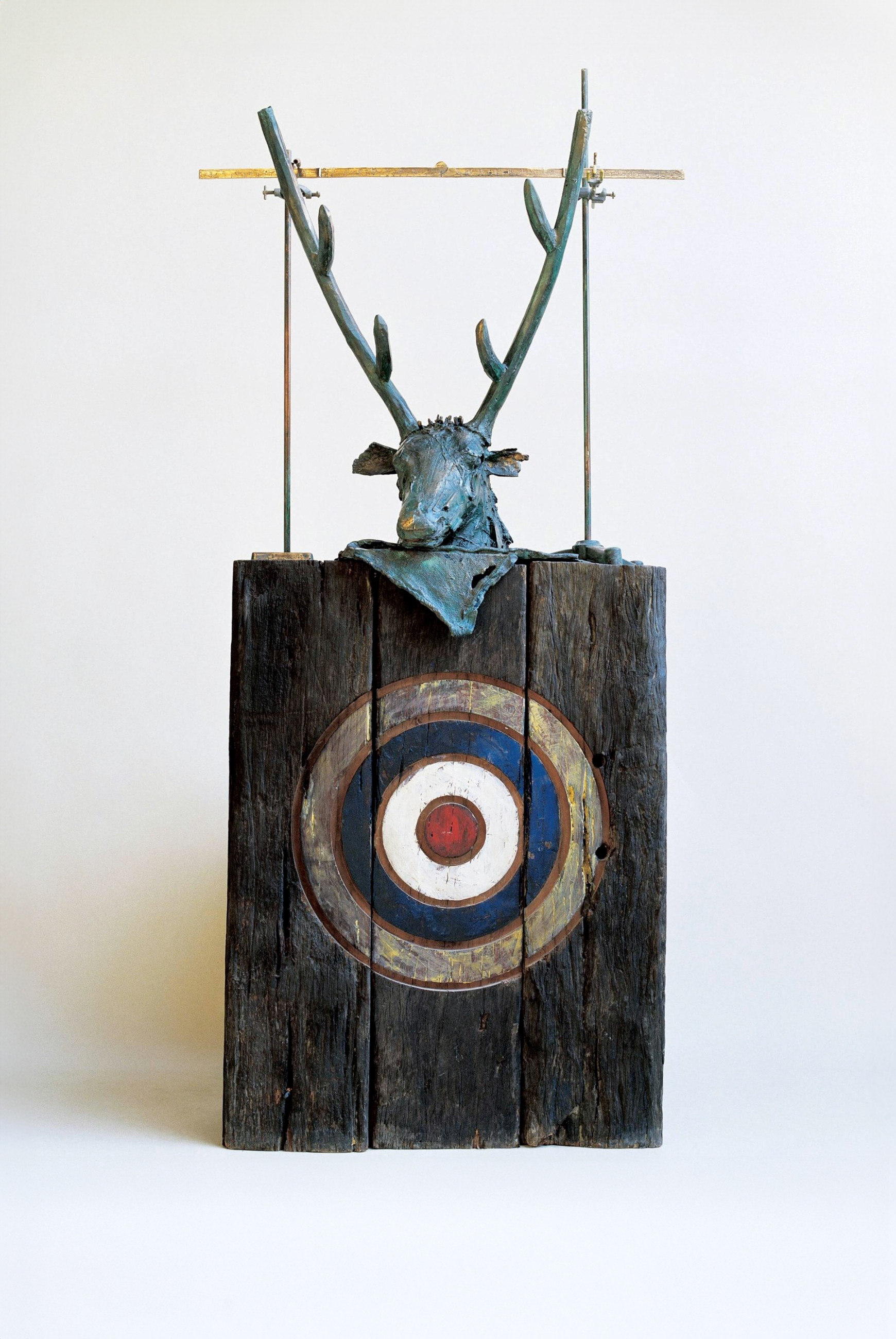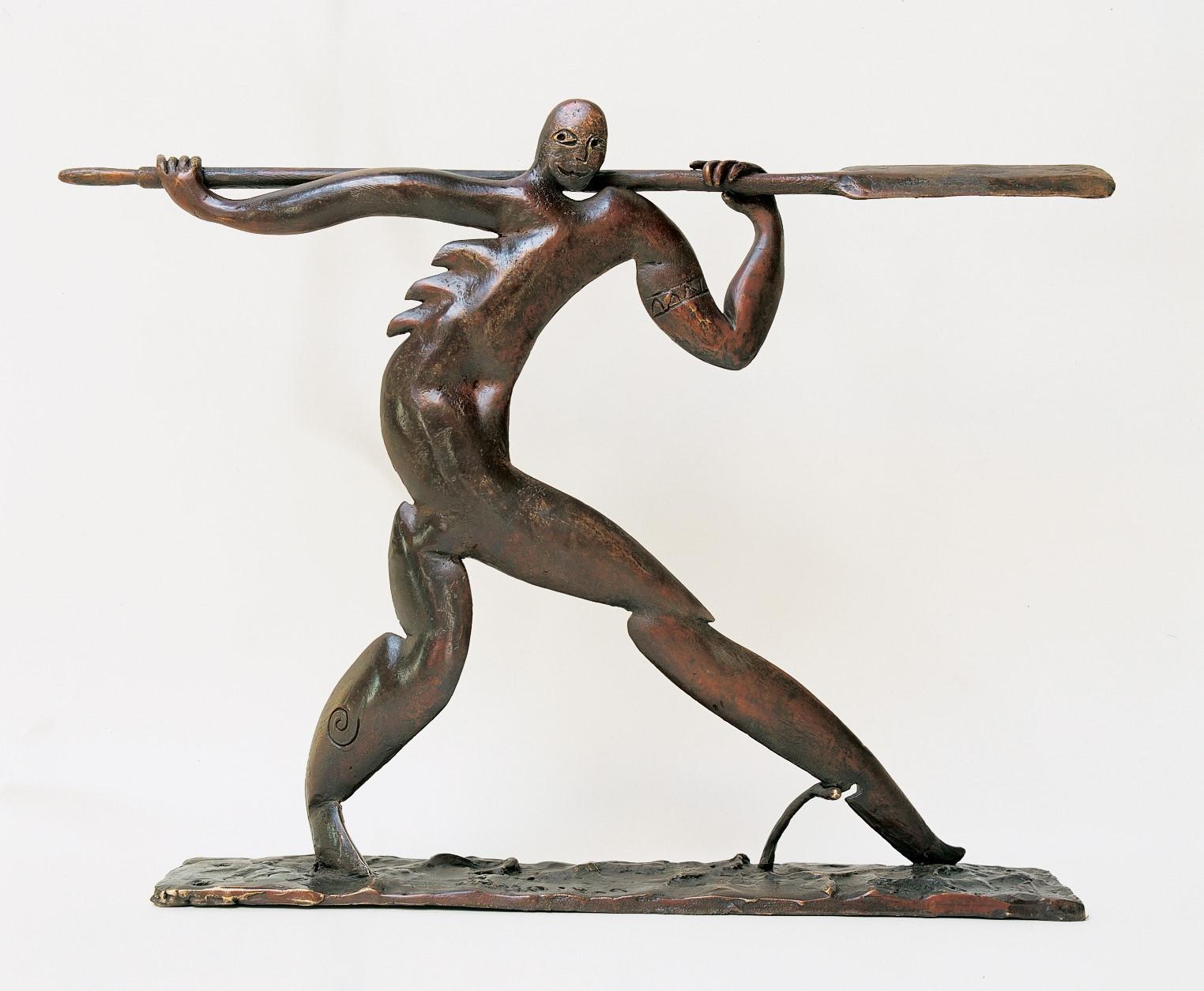September 15 - December 2, 2001 Moving Forward, Looking Back
September 15 - December 2, 2001 Moving Forward, Looking BackRetrospective, Te Manawa, Palmerston North
Text
….. whilst many people are aware of Dibble’s recent work, relatively few are familiar with his early career. “Moving Forwards, Looking Back” is a survey exhibition charting the development of Dibble’s work over the past 30 years.
The starting point is Kneeling Figure, one of a number of pieces produced in the early 1960s when he attended Elam School of Art. …
Towards the end of the 1970s Dibble began to work on stitched cloth filled with sand. Often hung as reliefs, sometimes with surgical drips infusing dye into the plain cloth, they signal the start of Dibble’s fascination with line. The techniques used also became very significant in later work when he started to use stitched canvas to create casting moulds.
Much of this early work was ephemeral, including conceptual art installations lasting only as long as the exhibition, but the concern with line continued throughout the period, shifting from stitched seams to aluminium poles in works like The Sealed Corner of the Garden. The life sized cut out parrots perching on the end of these poles herald the next phase in Dibble’s work.
Returning to metal, he began creating figurative pieces in folded steel plate. Using industrial presses, pieces of metal were cut and creased before being bolted together. It is here that the ideas and motifs that became characteristic of his later work first make an appearance – larger than life figures which seem very substantial from one point of view but almost disappear when seen from the side. Often incongruously unbalanced or supported by impossibly thin twigs, these features hint at Dibble’s sense of the absurd.
In the mid-1980s he returned to bronze casting and began a body of work now known as the Hinterland Series. These works often defer to the classical style and contain references to the heroes of Greek mythology whilst at the same time raising New Zealand icons such as ukuleles, beer bottles, duck hunters and sheep to equally heroic status. But even though they may be overtly humorous they are never flippant, a feeling of respect for the figures and a sense of dignity prevails.
The most recent work continues the development of these themes but new concerns become evident. The ‘New Zealandness’ of the work becomes broader and encompasses Polynesian elements. Some of the figurative work is pared back so that limbs, joints and heads become simple cones and spheres, and where previously he used whole birds to evoke a sense of New Zealand’s fragile ecosystem, now the idea is reduced to a single monumental huia feather. The scale of the work magnifies the sense of tragedy at losing something so special.
These deeper considerations characterise much of Dibble’s latest work. Unusual and ironic juxtapositions highlight some of the paradoxes of our time – Green Tango explores the balance between environmental concerns and economic progress but if the issues have hardened, the sense of irony is just as quirky as it ever was. In common with Dick Frizzell, a feeling of respect for the subject does not stop the artist injecting his unique send of humour – witness Wild Colonial Dog Meets Grand Classical Nude.
